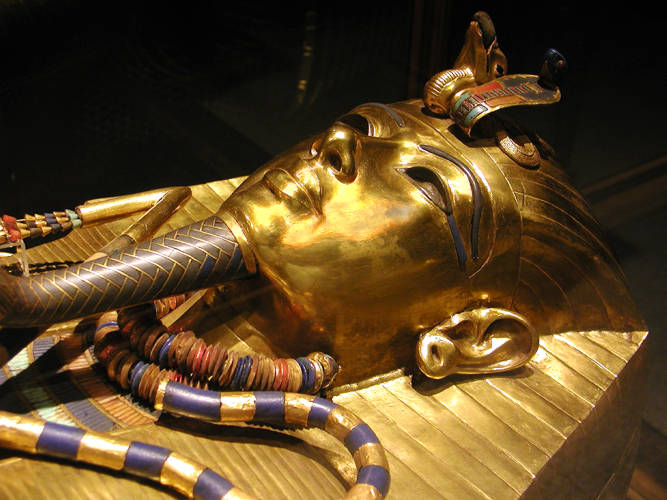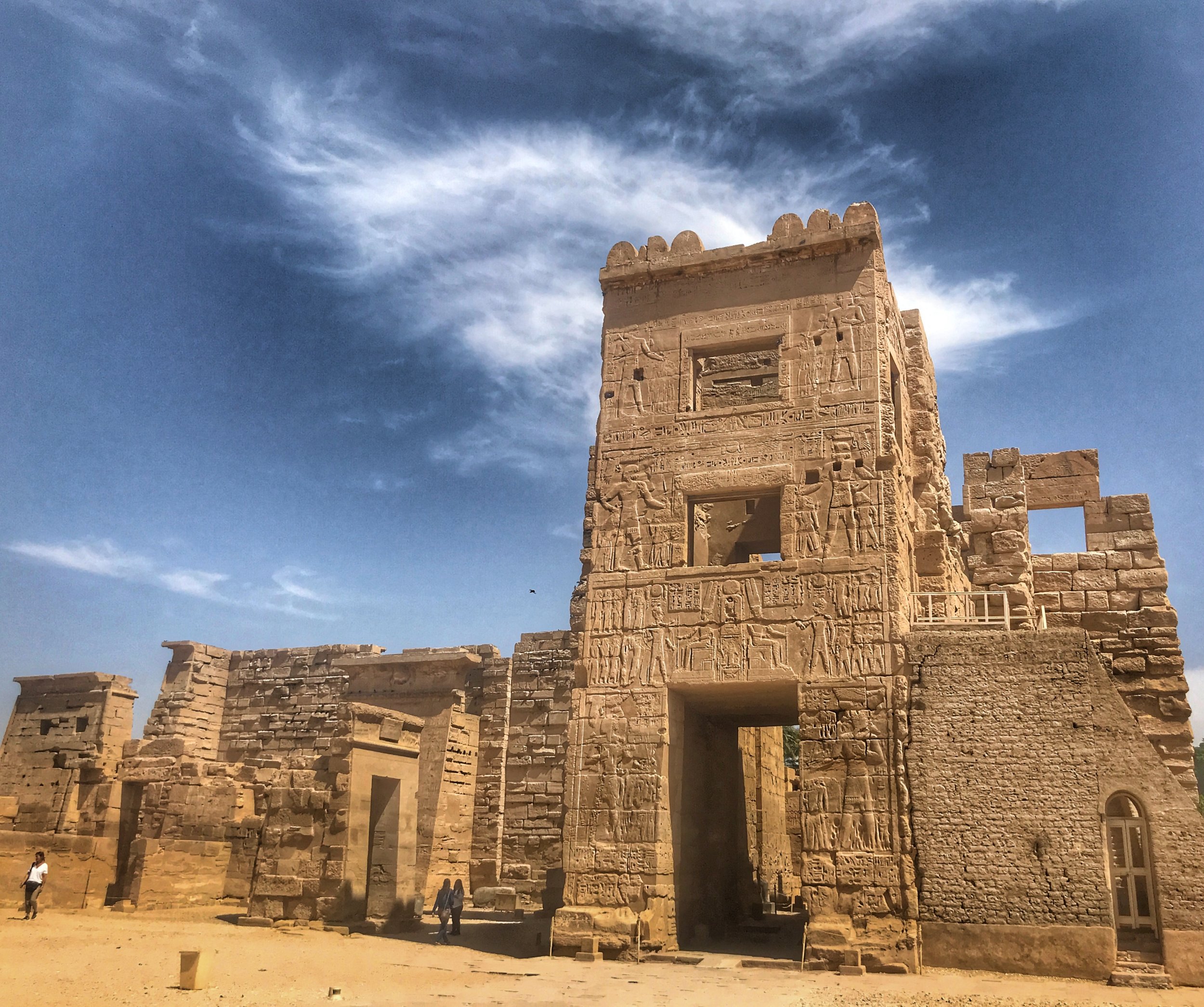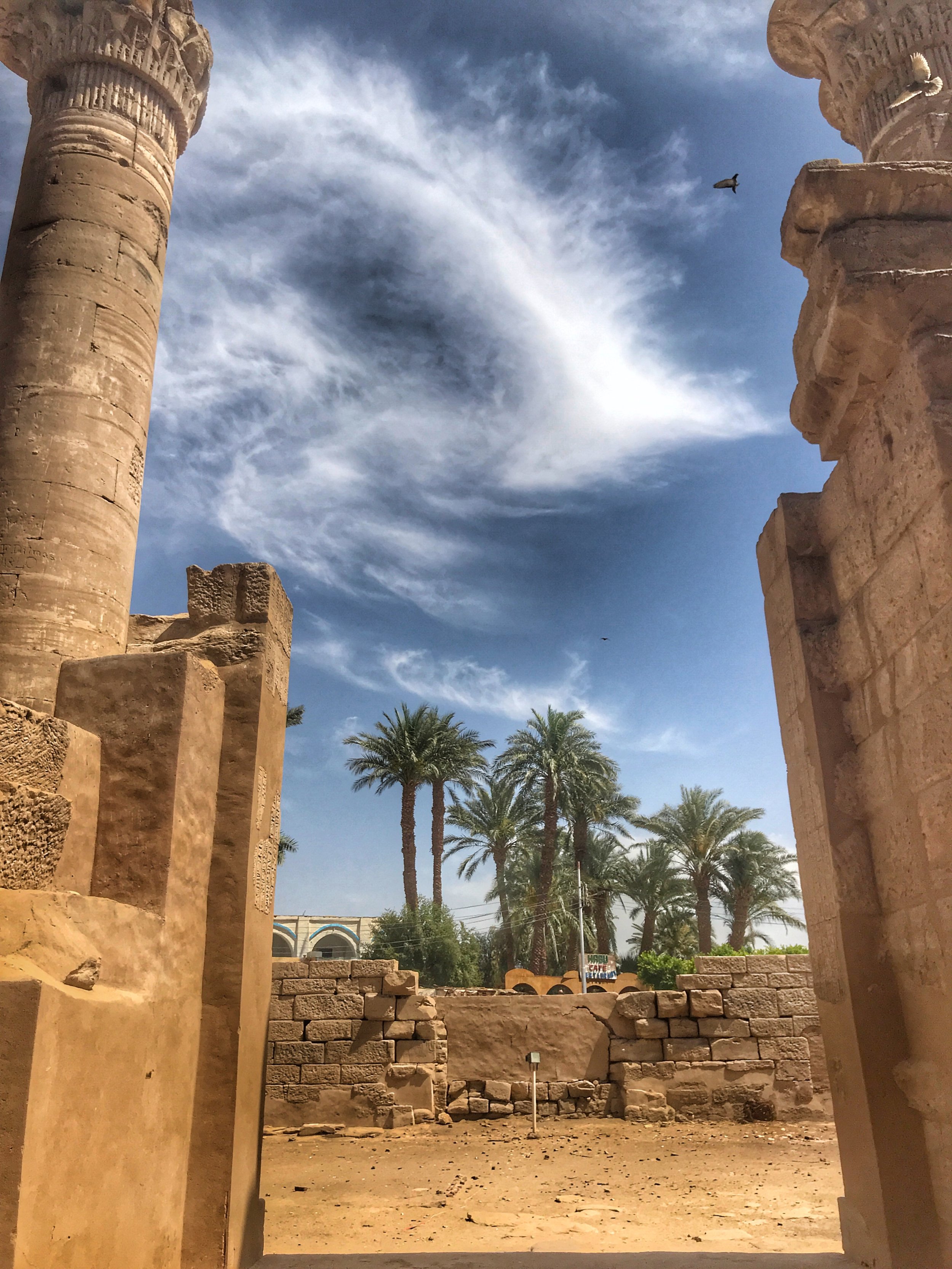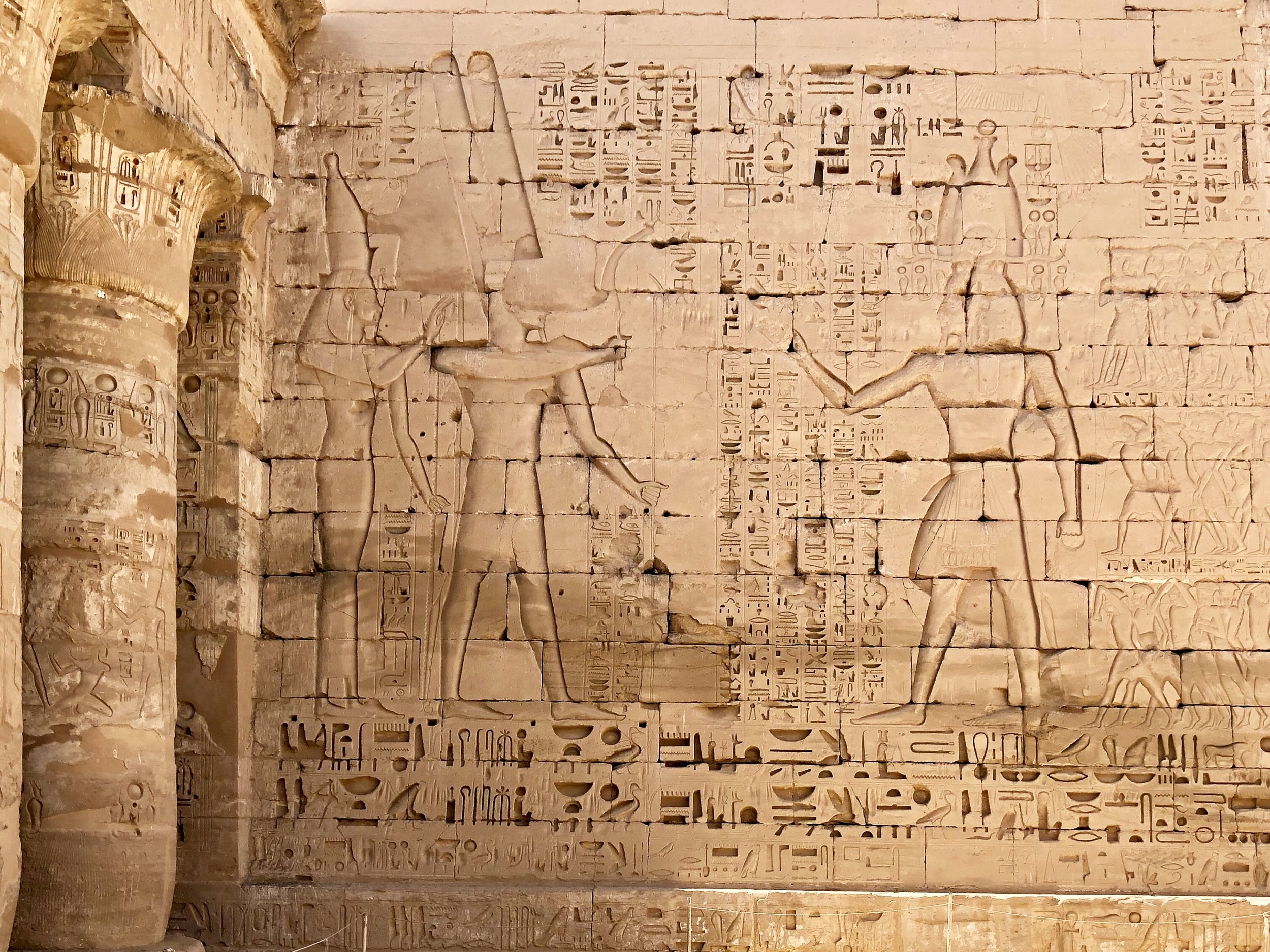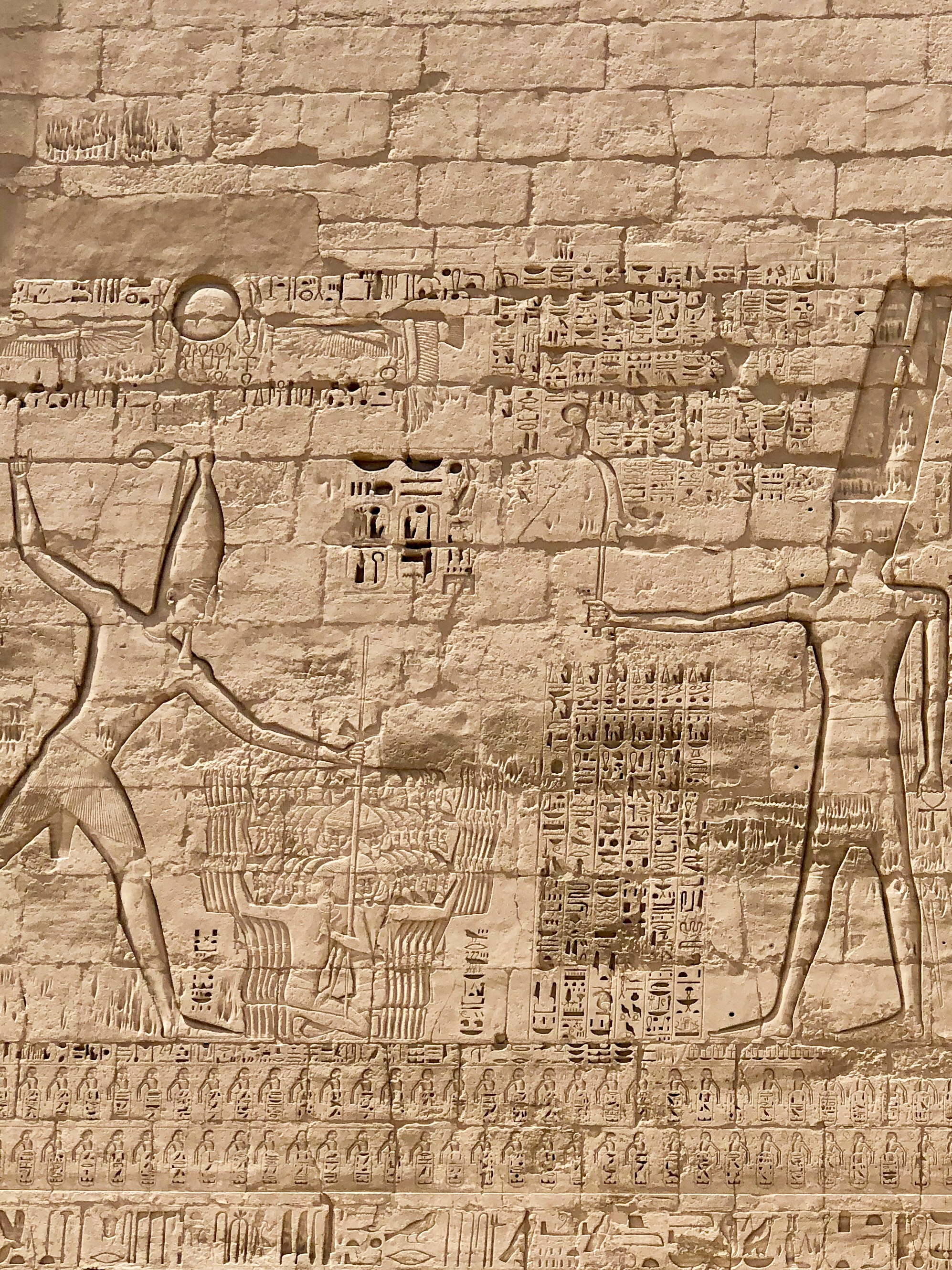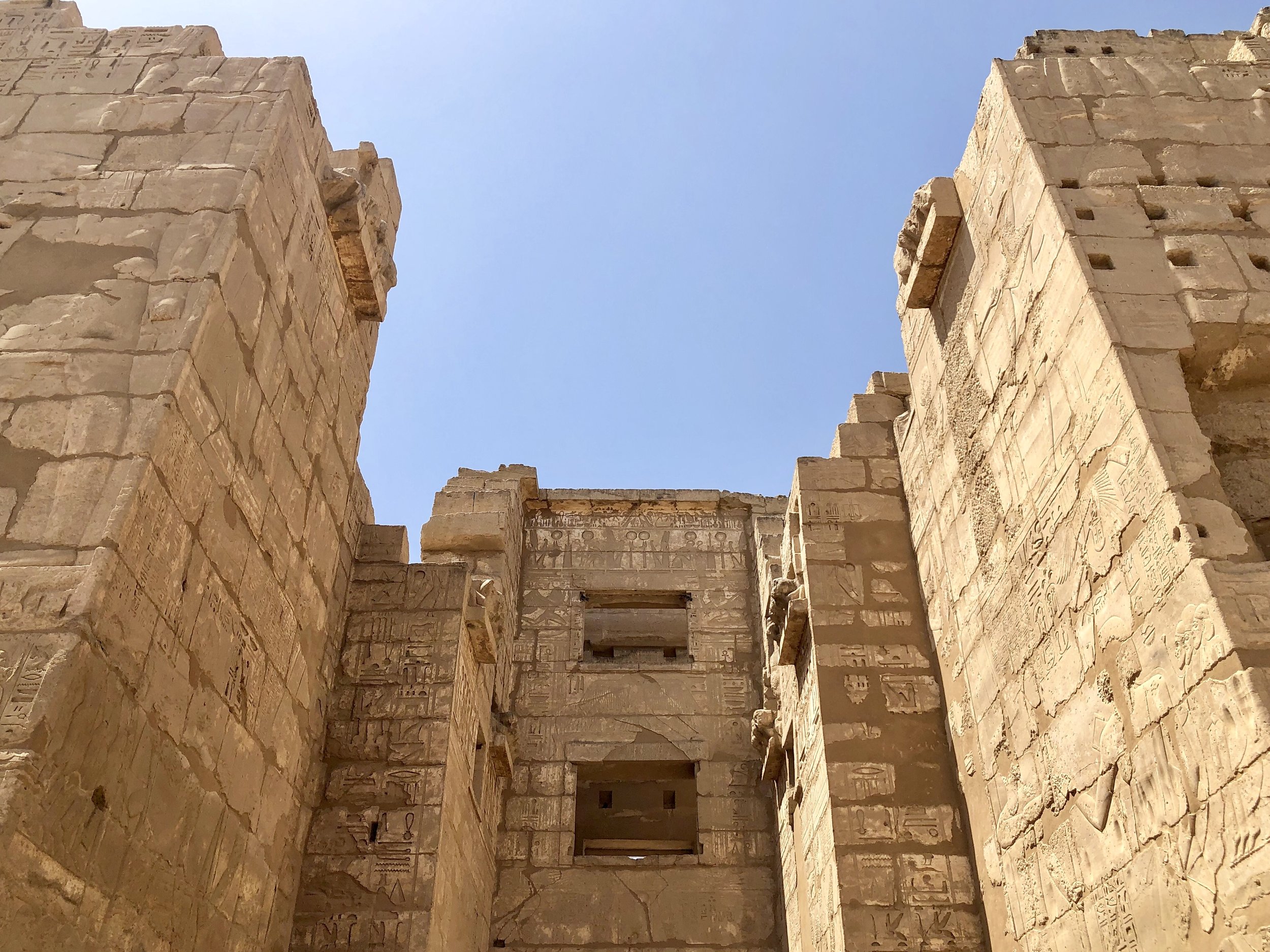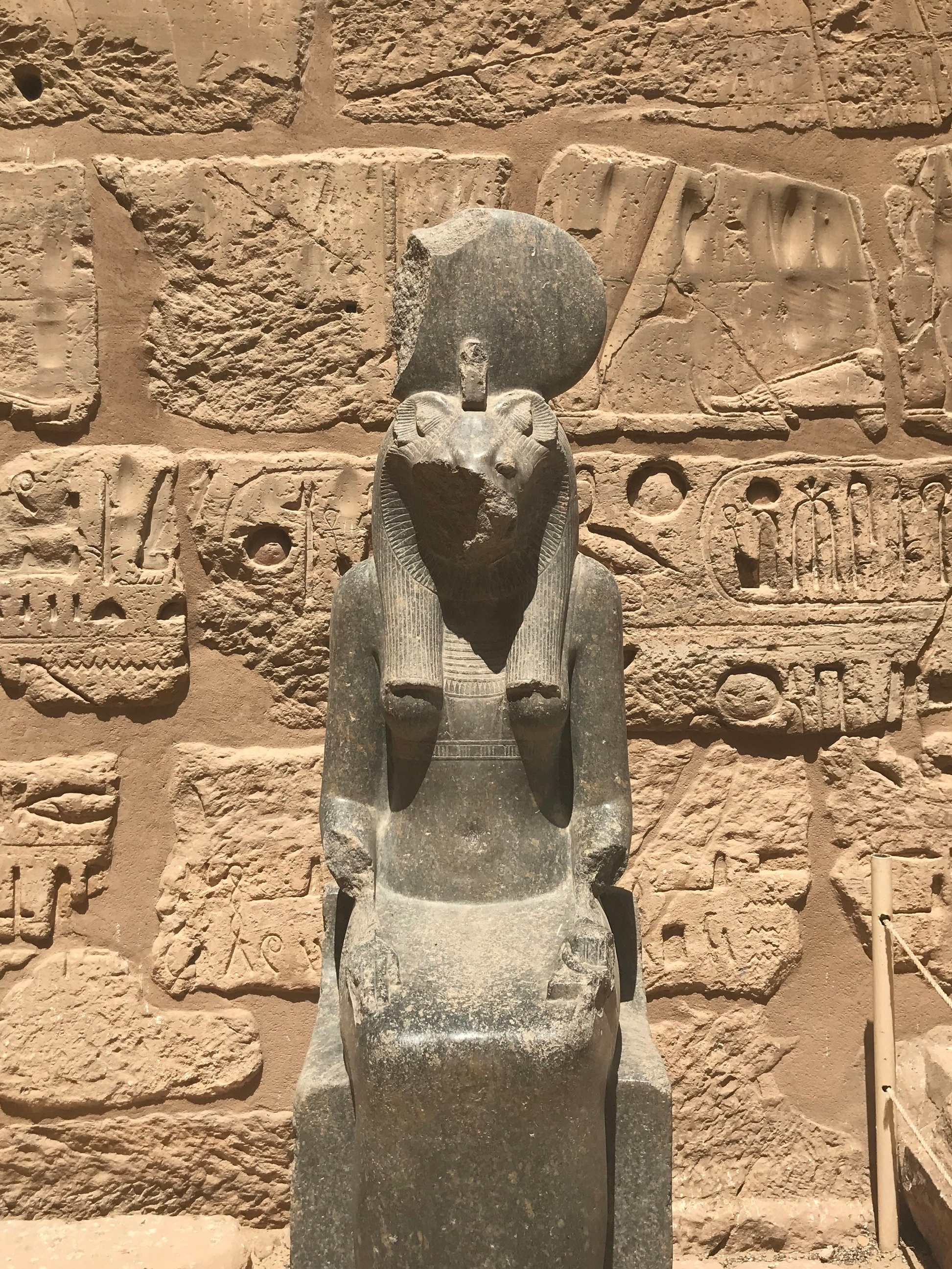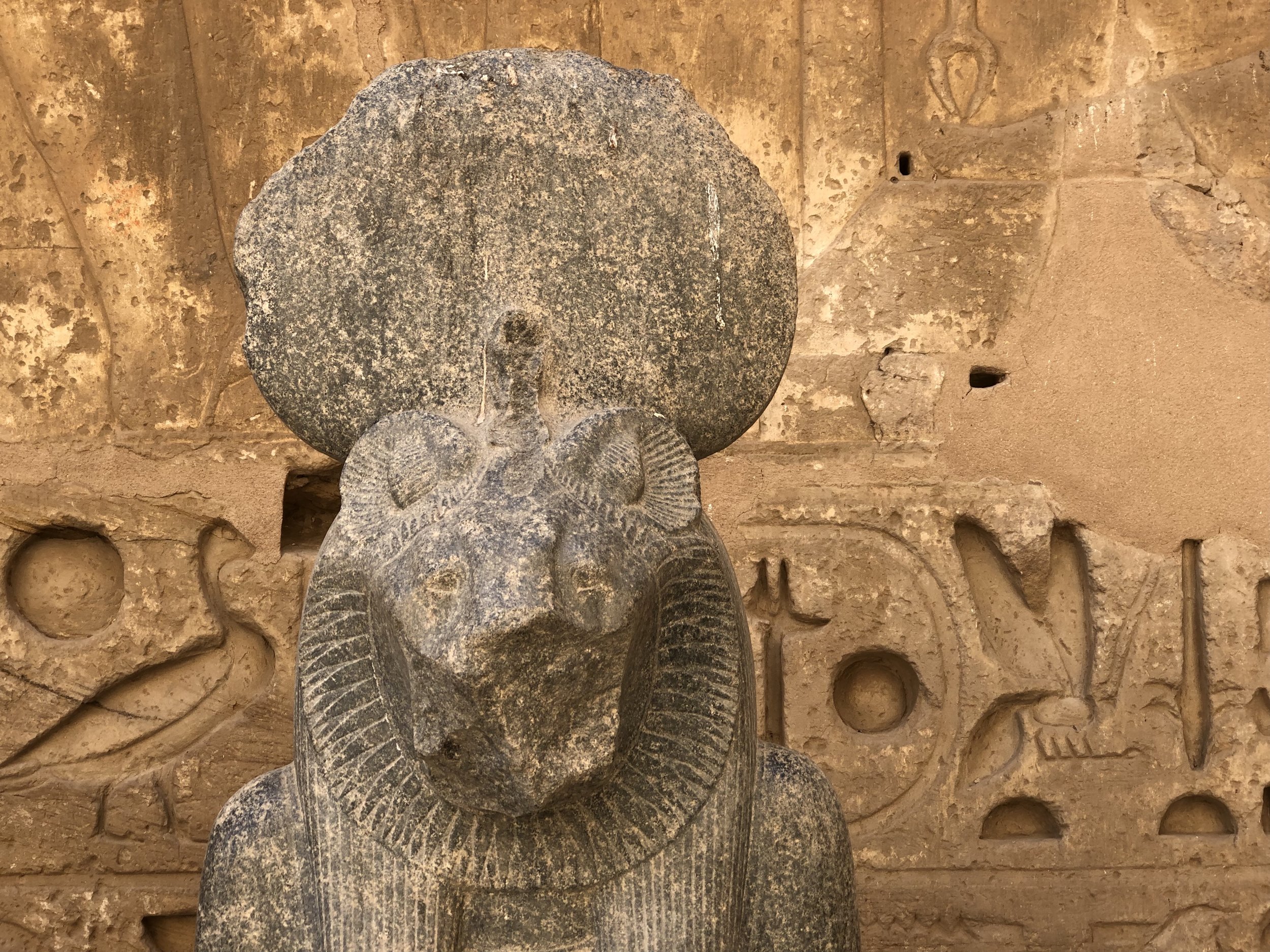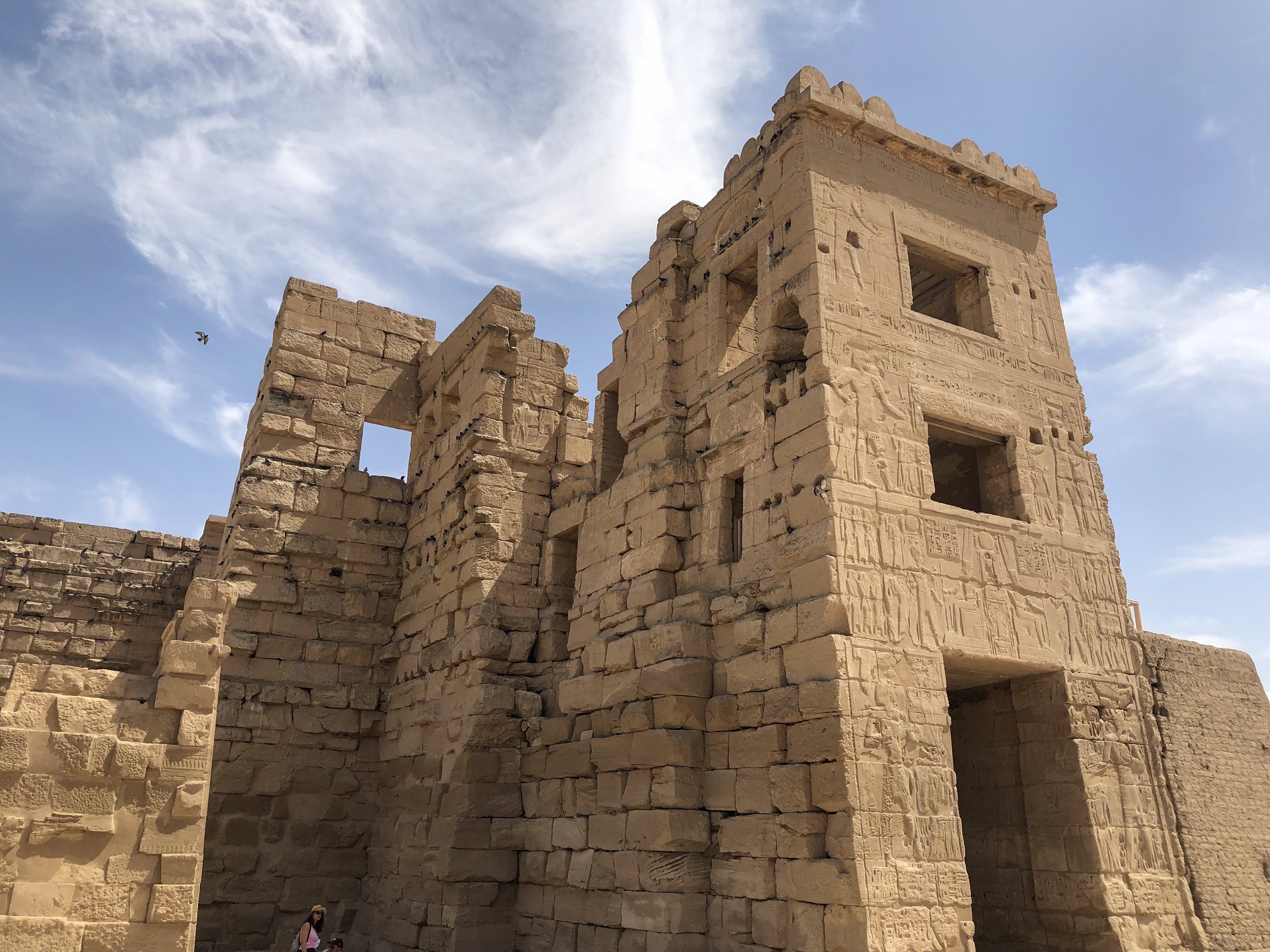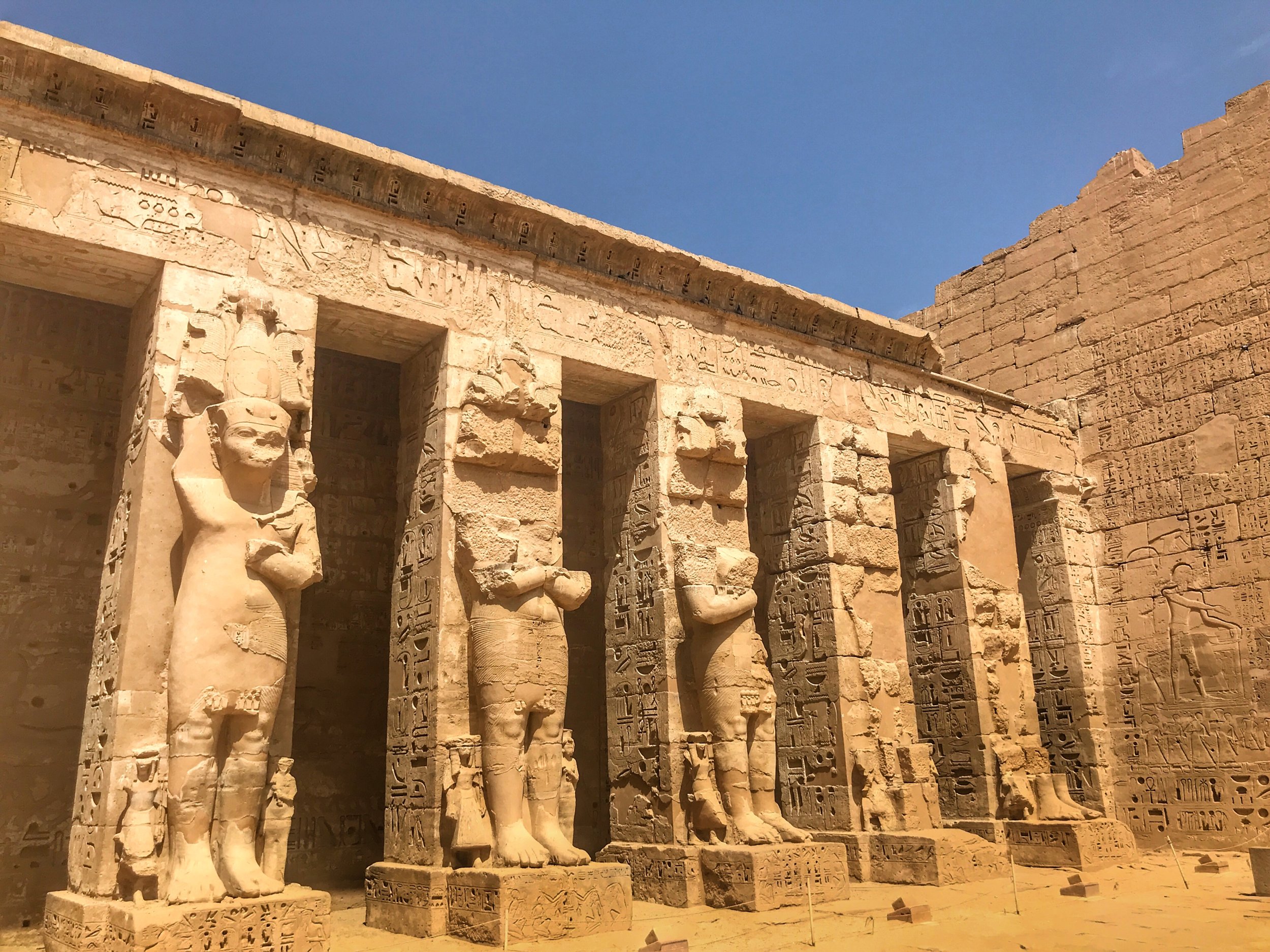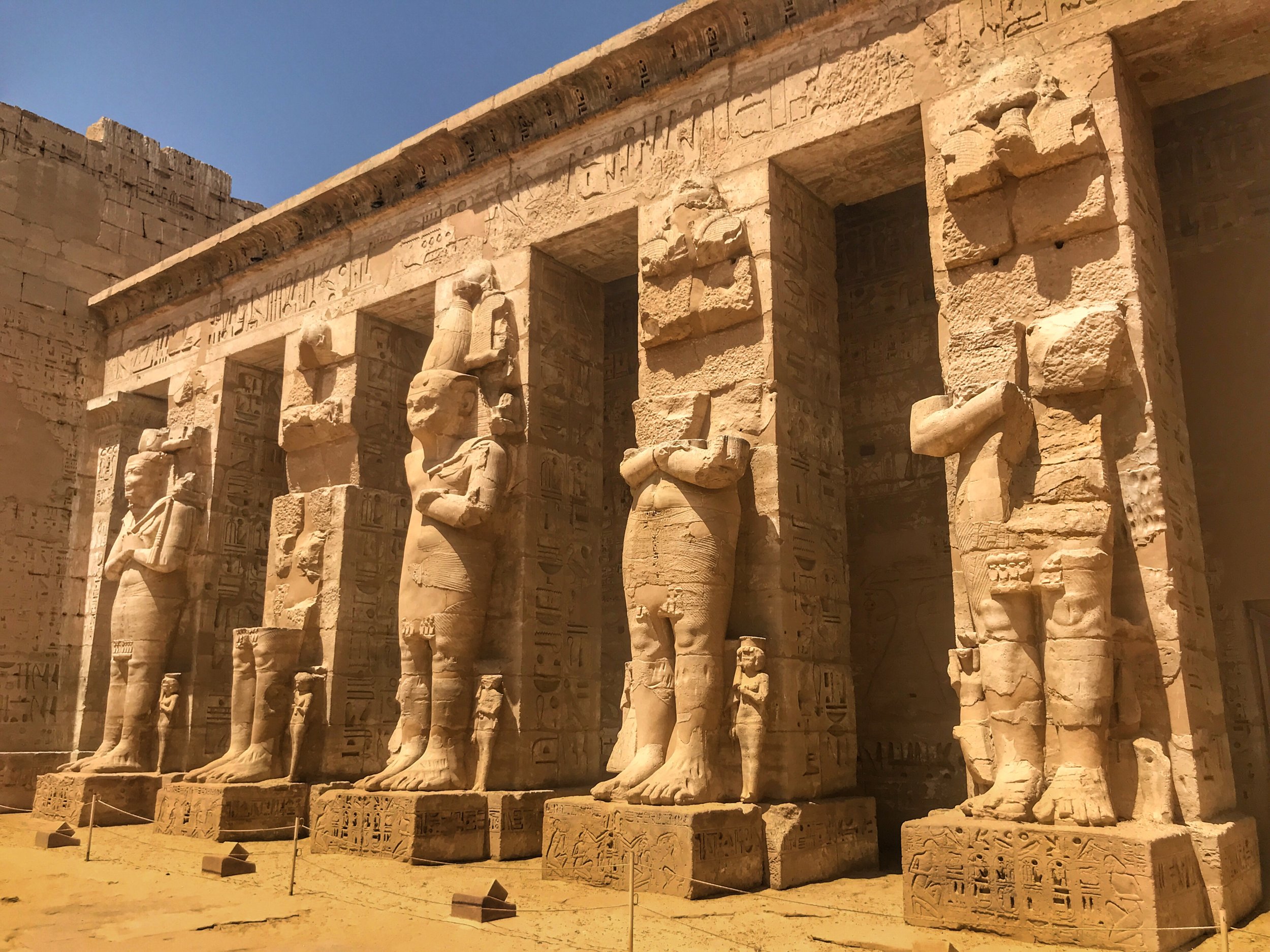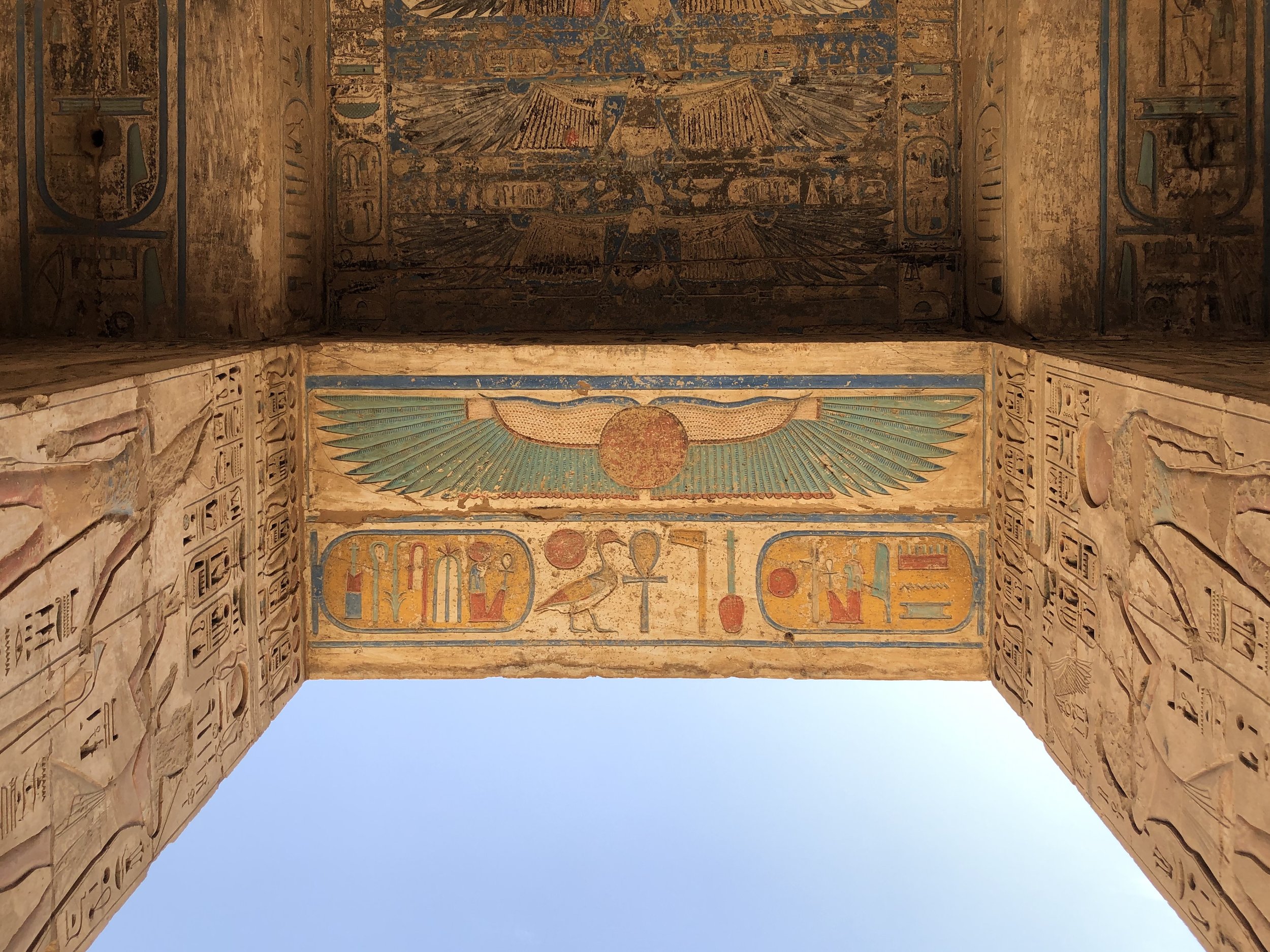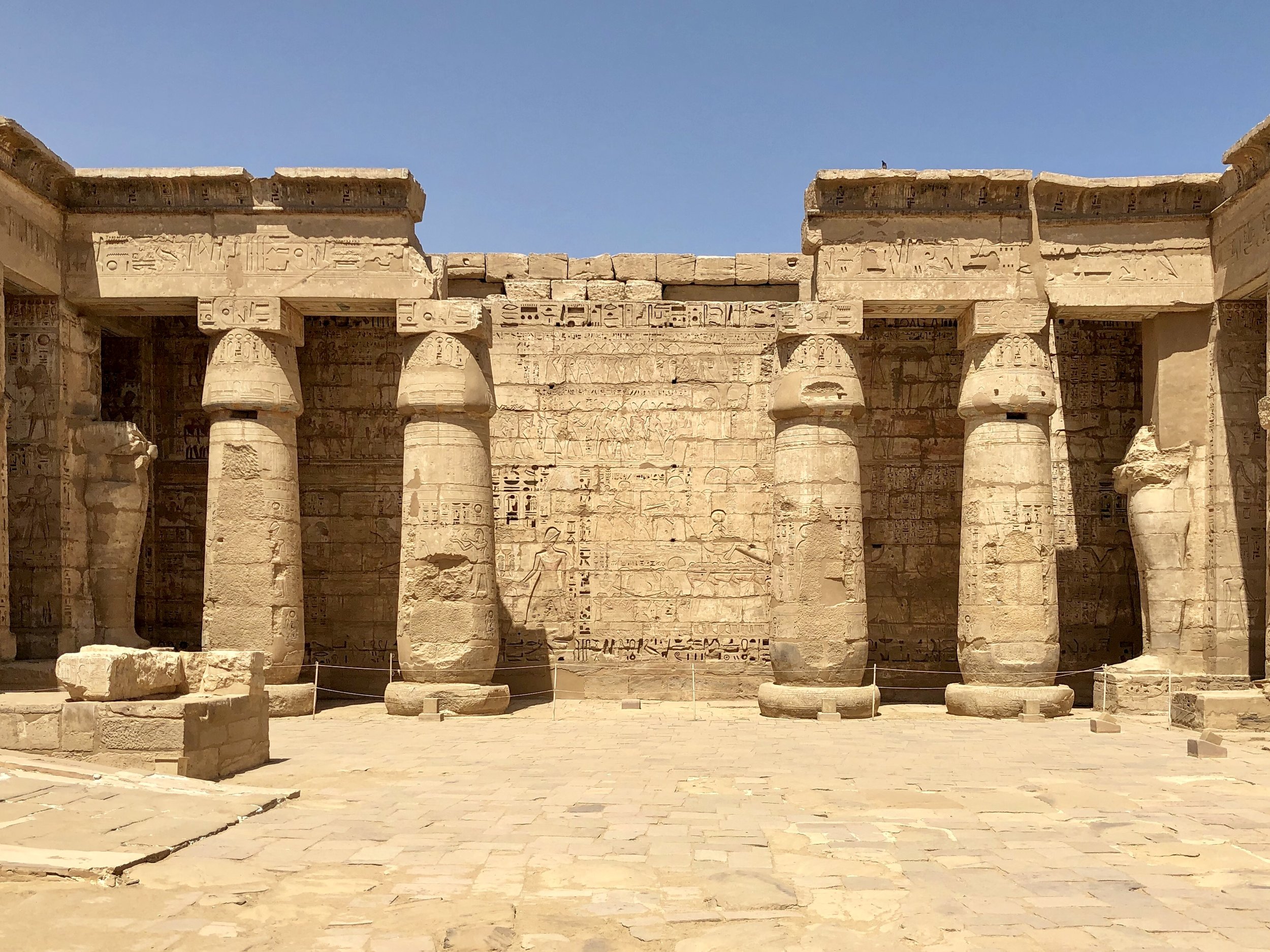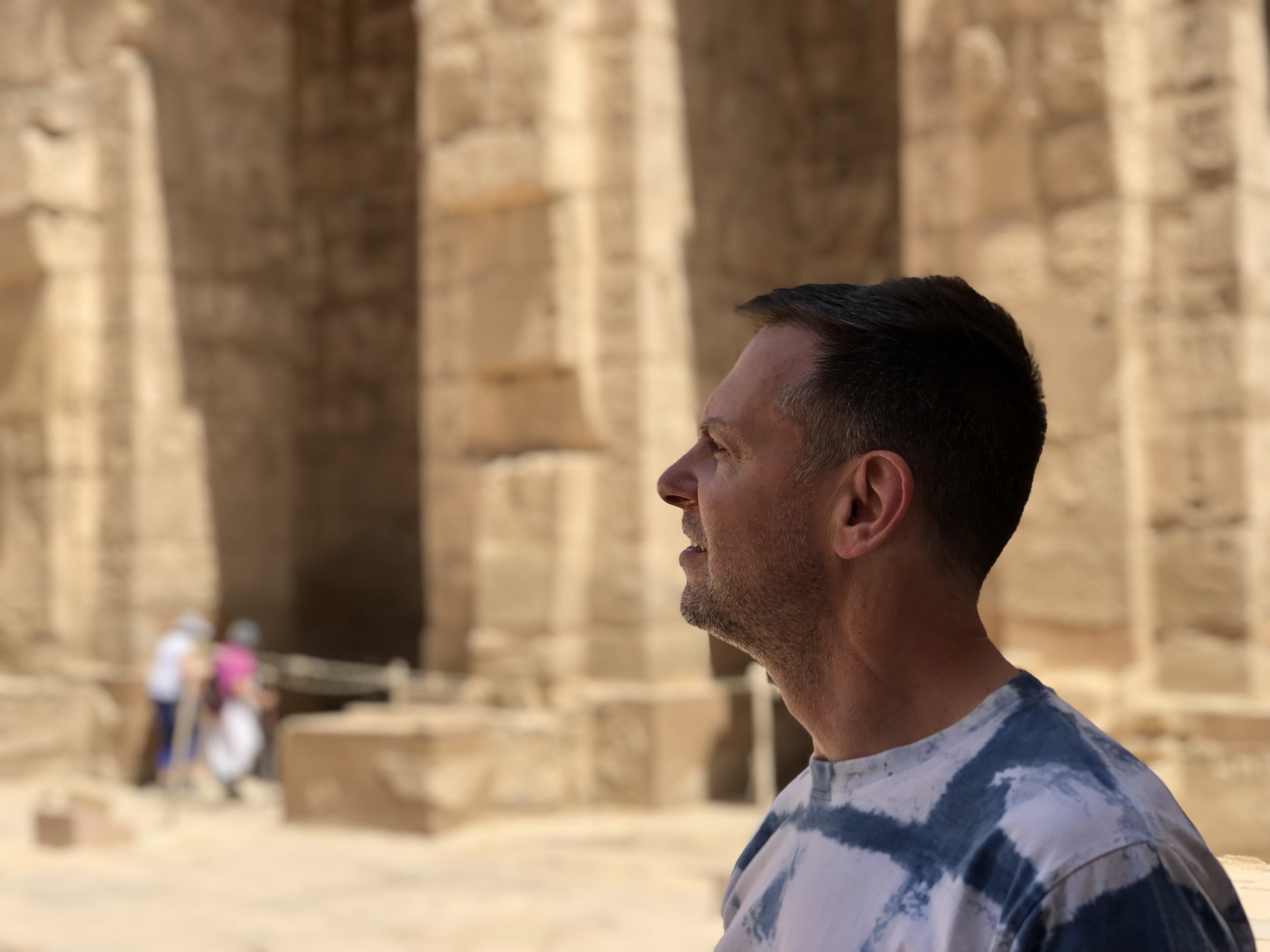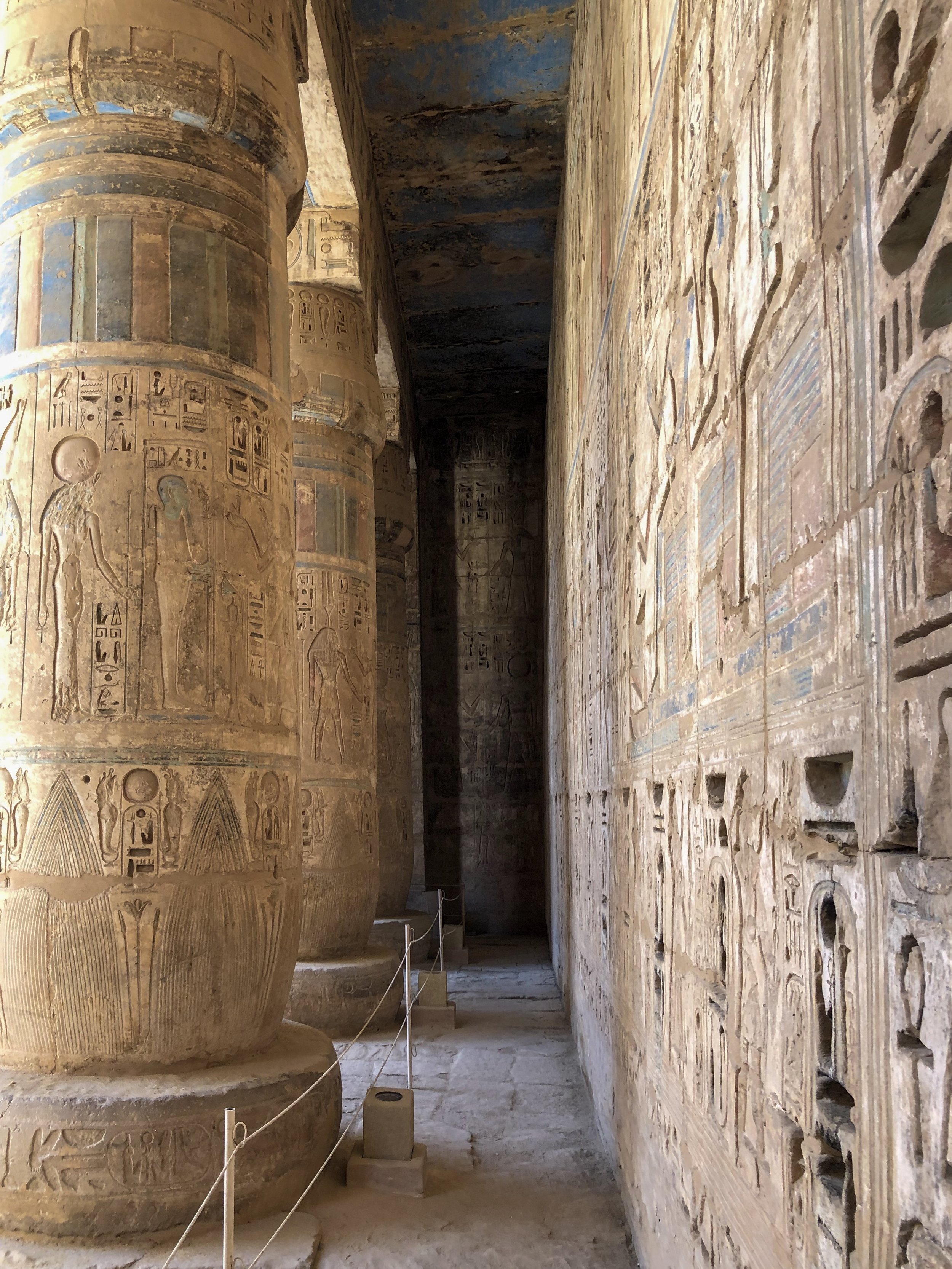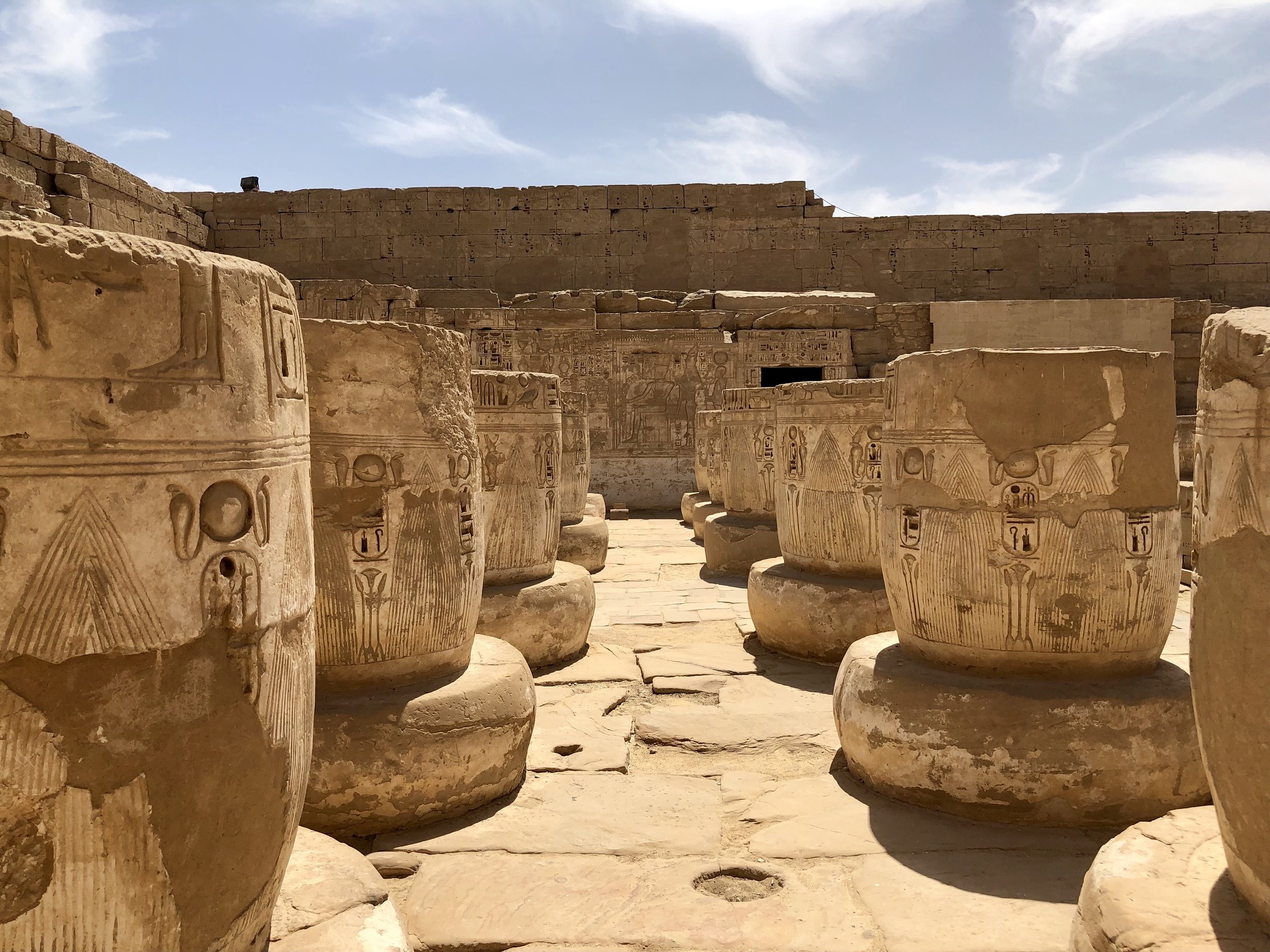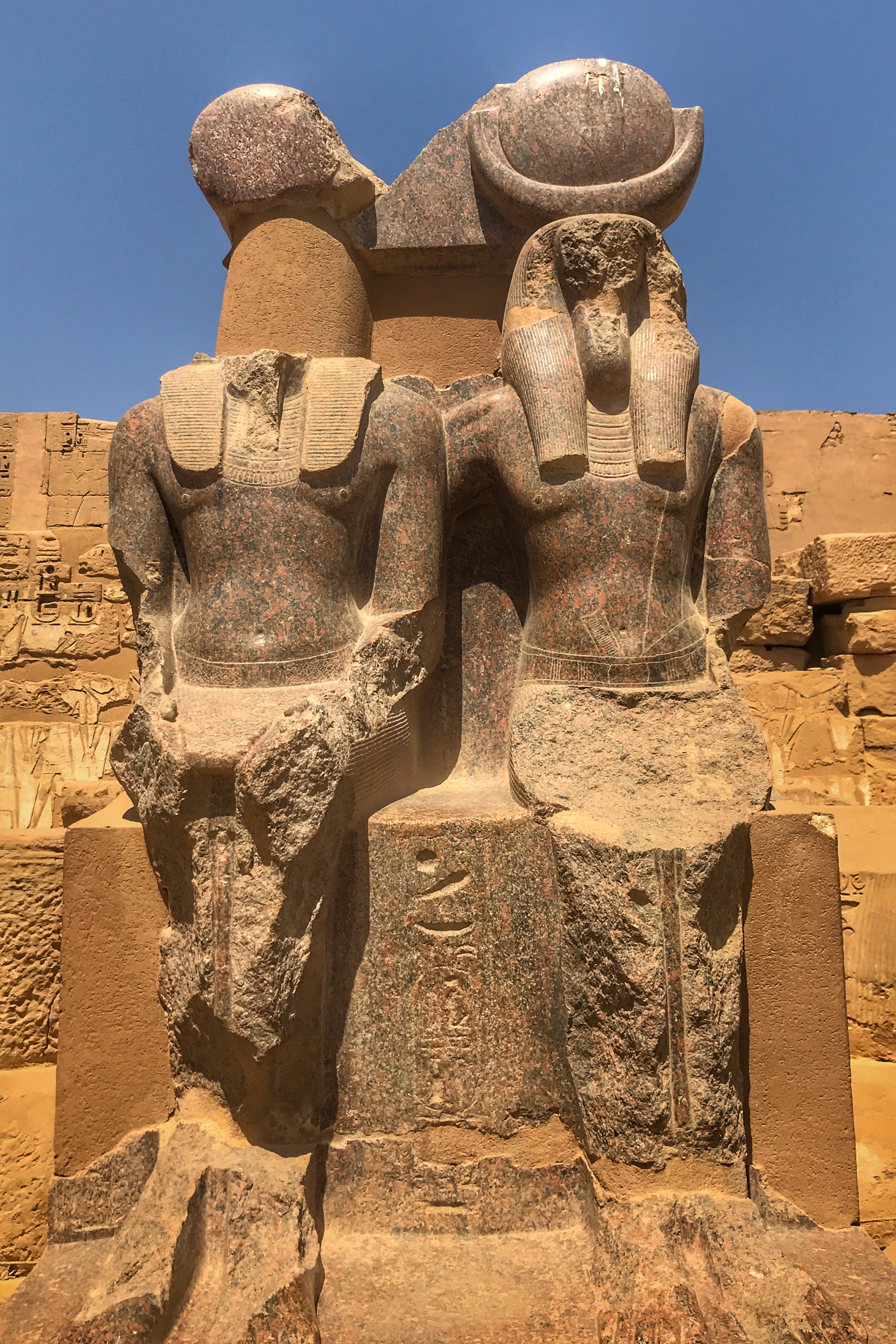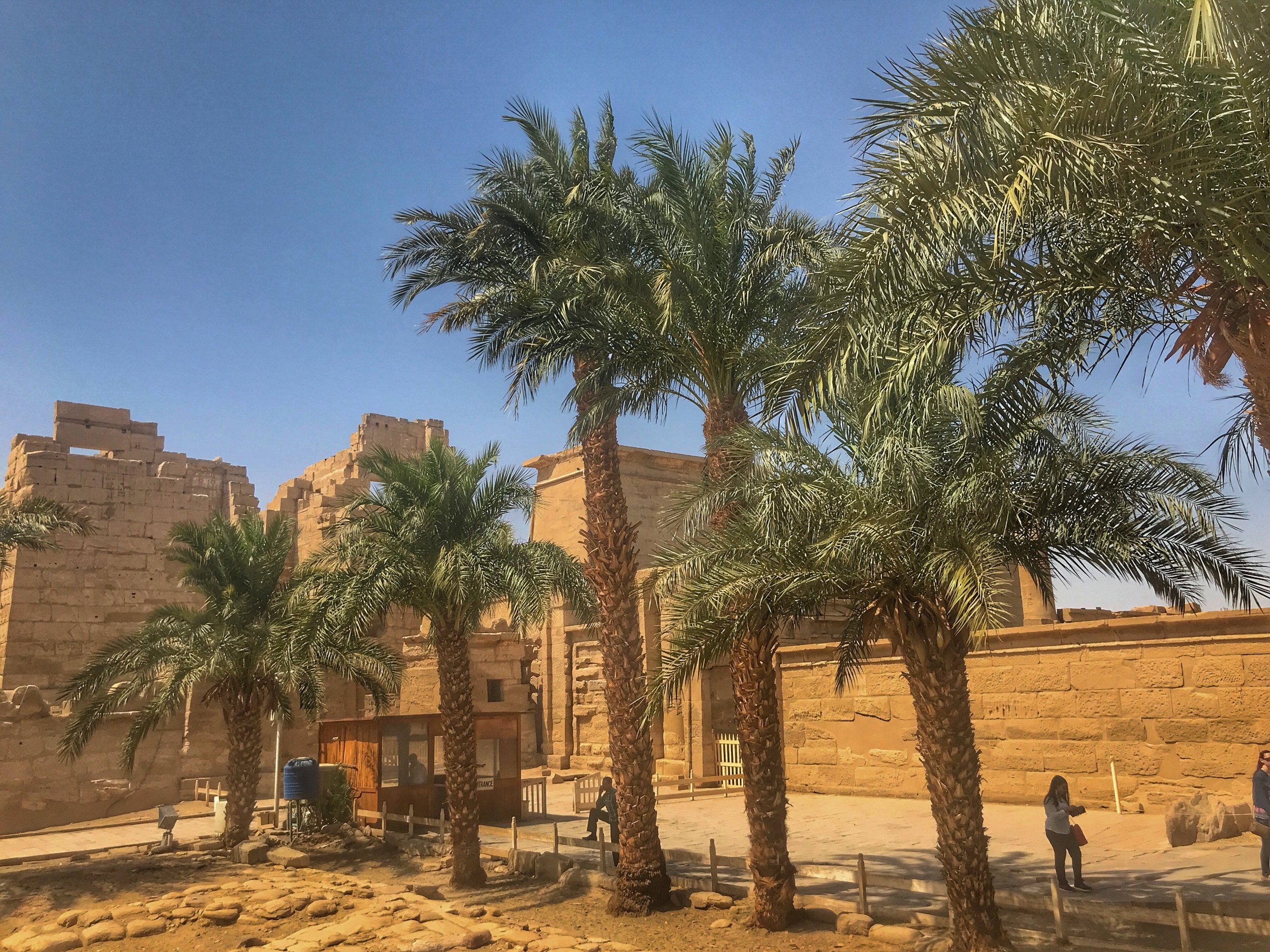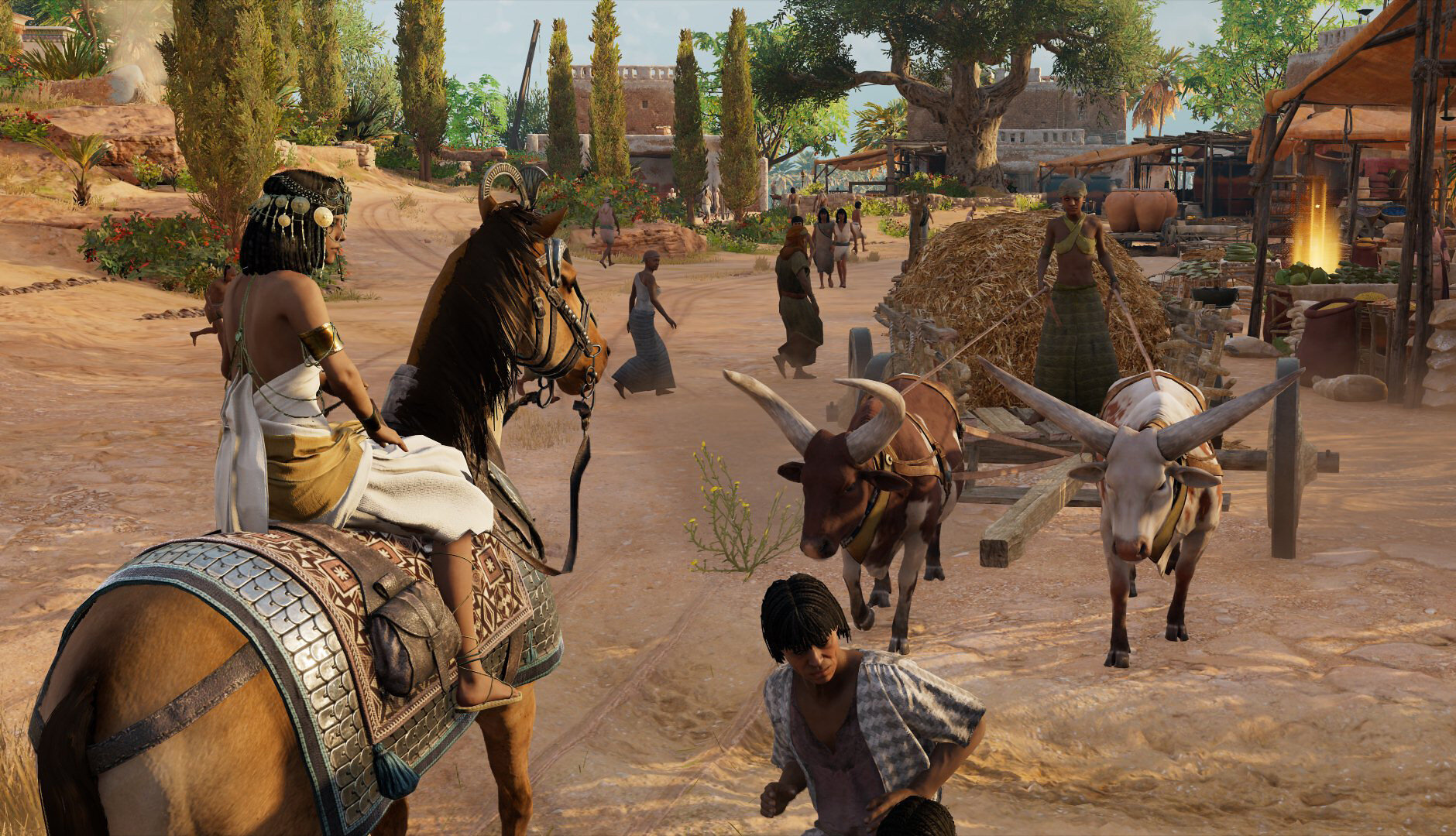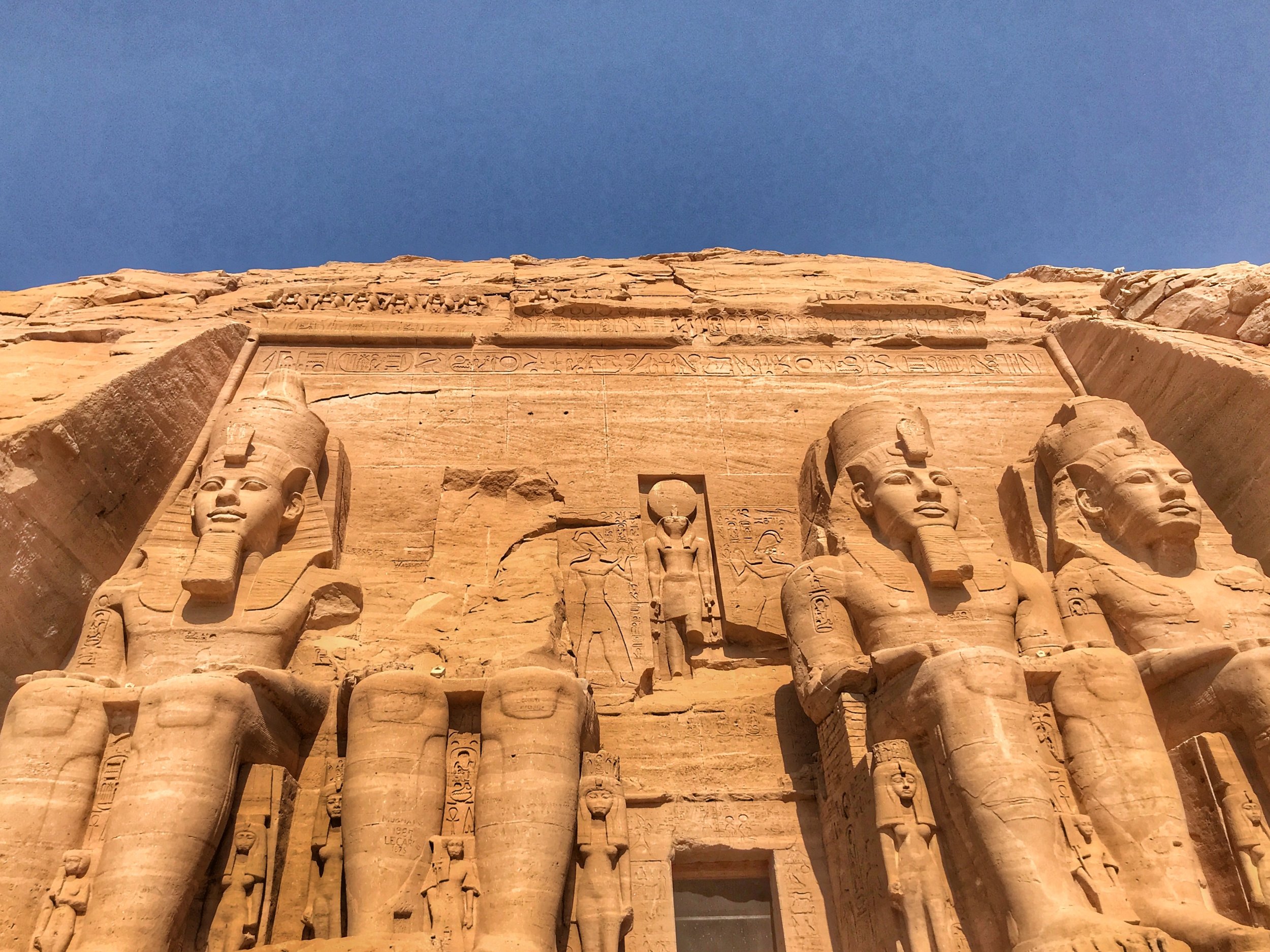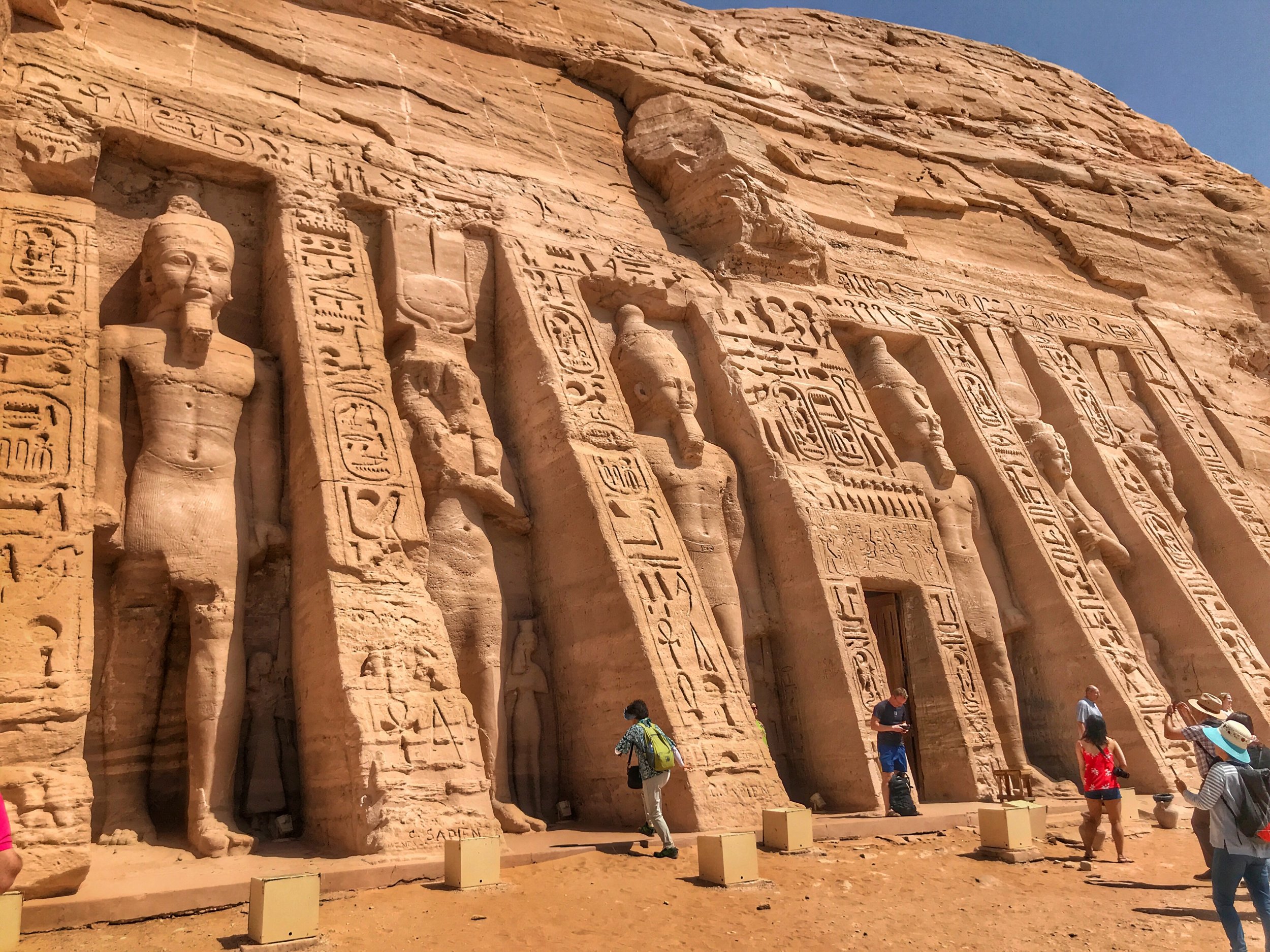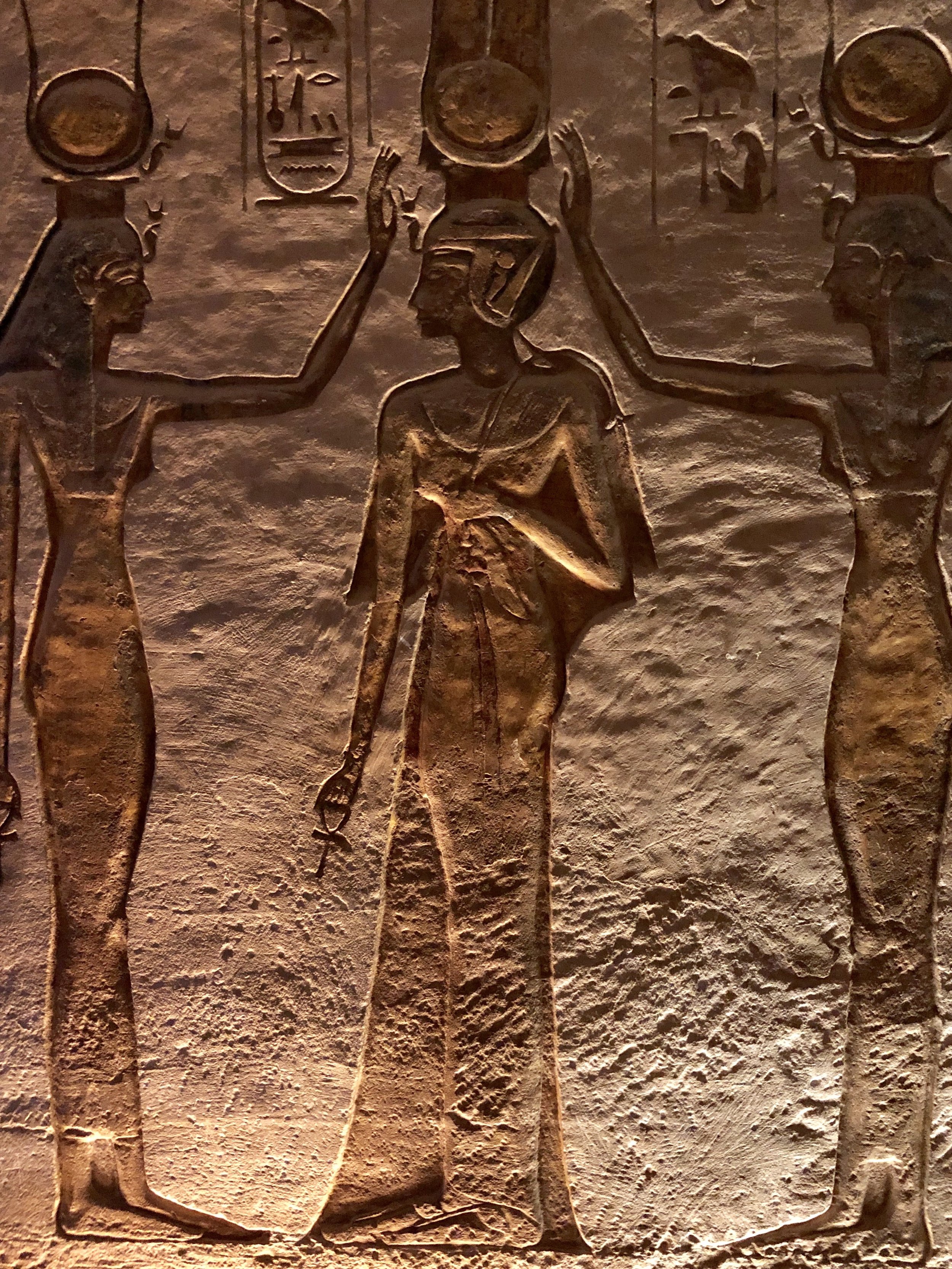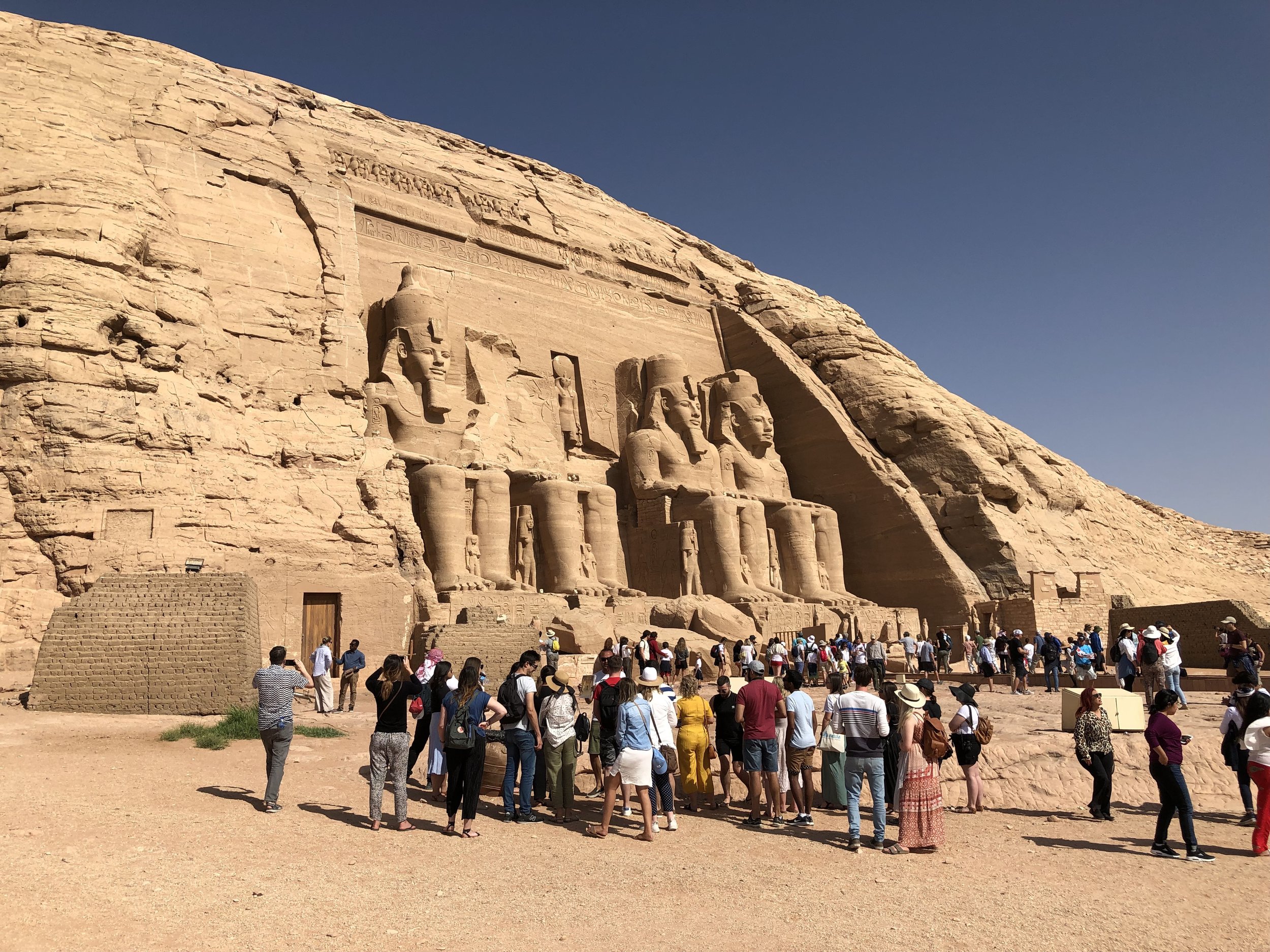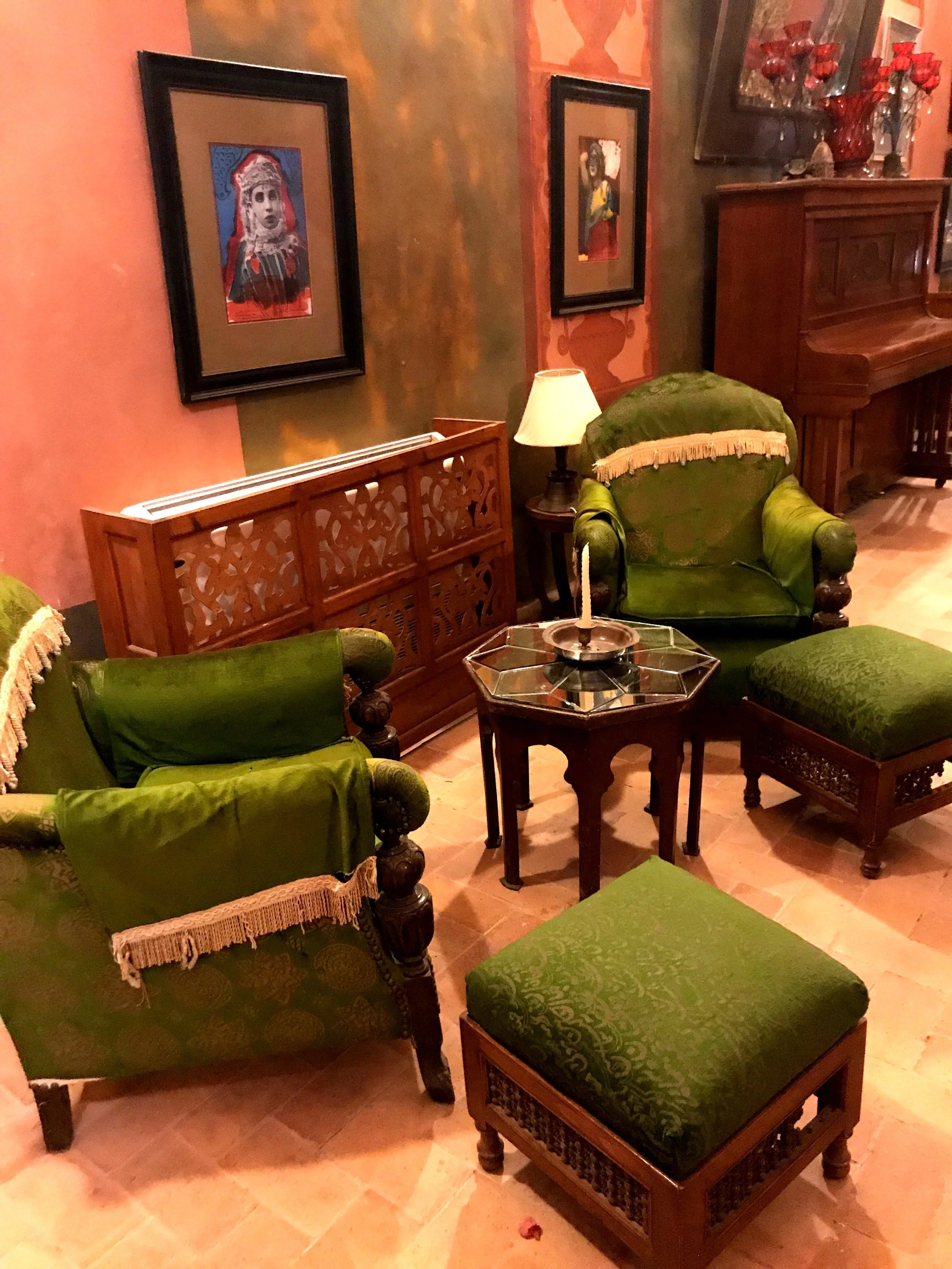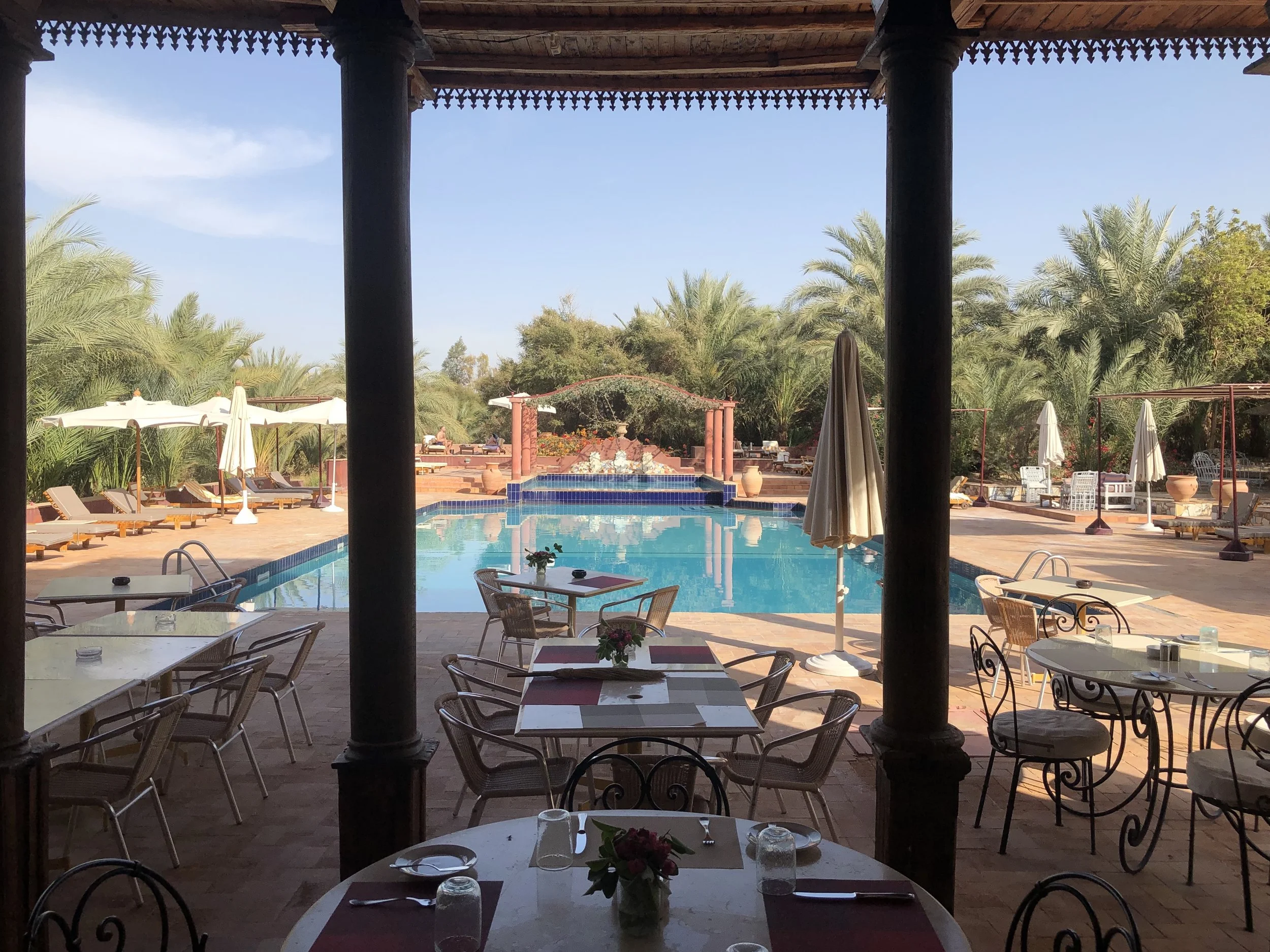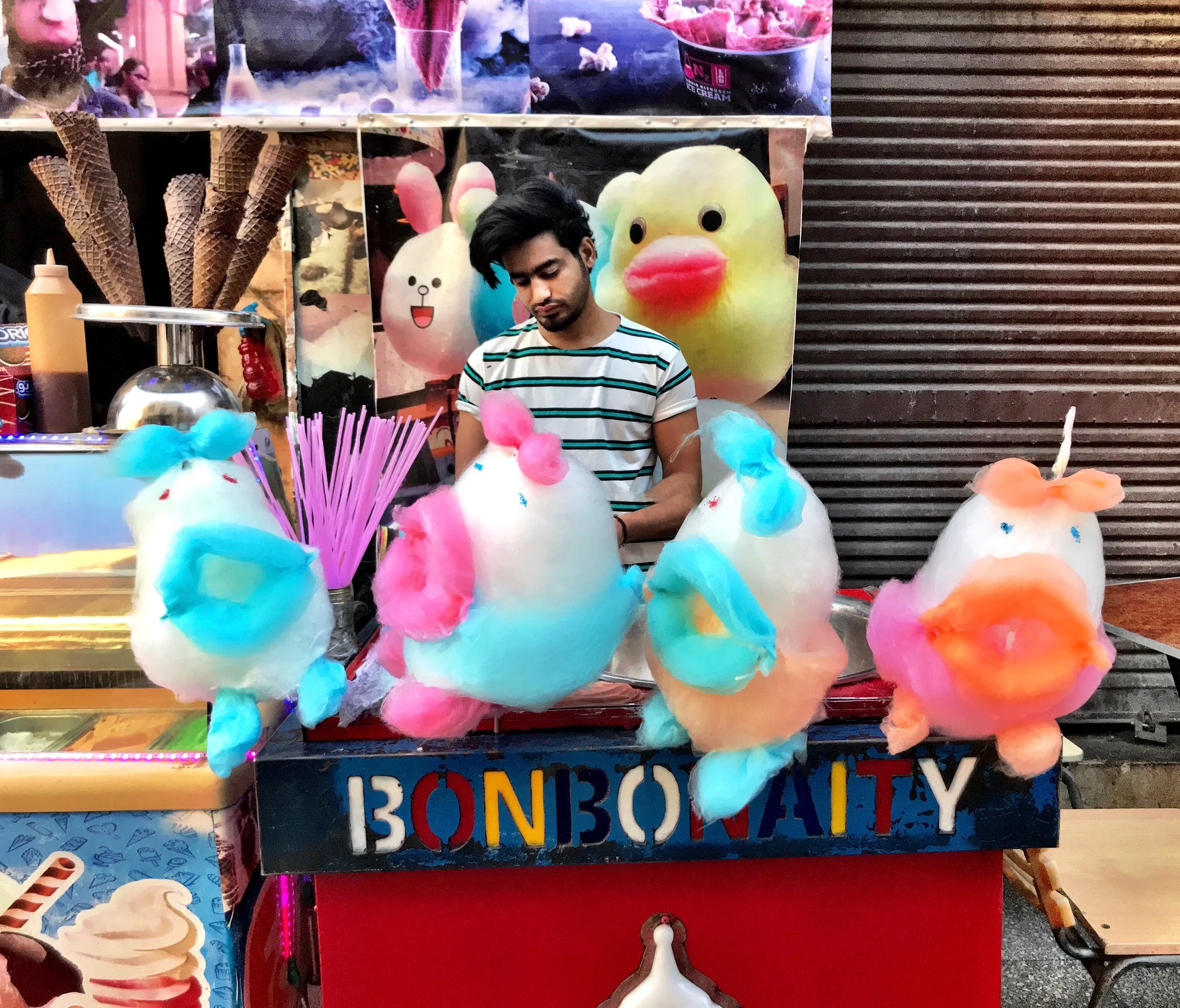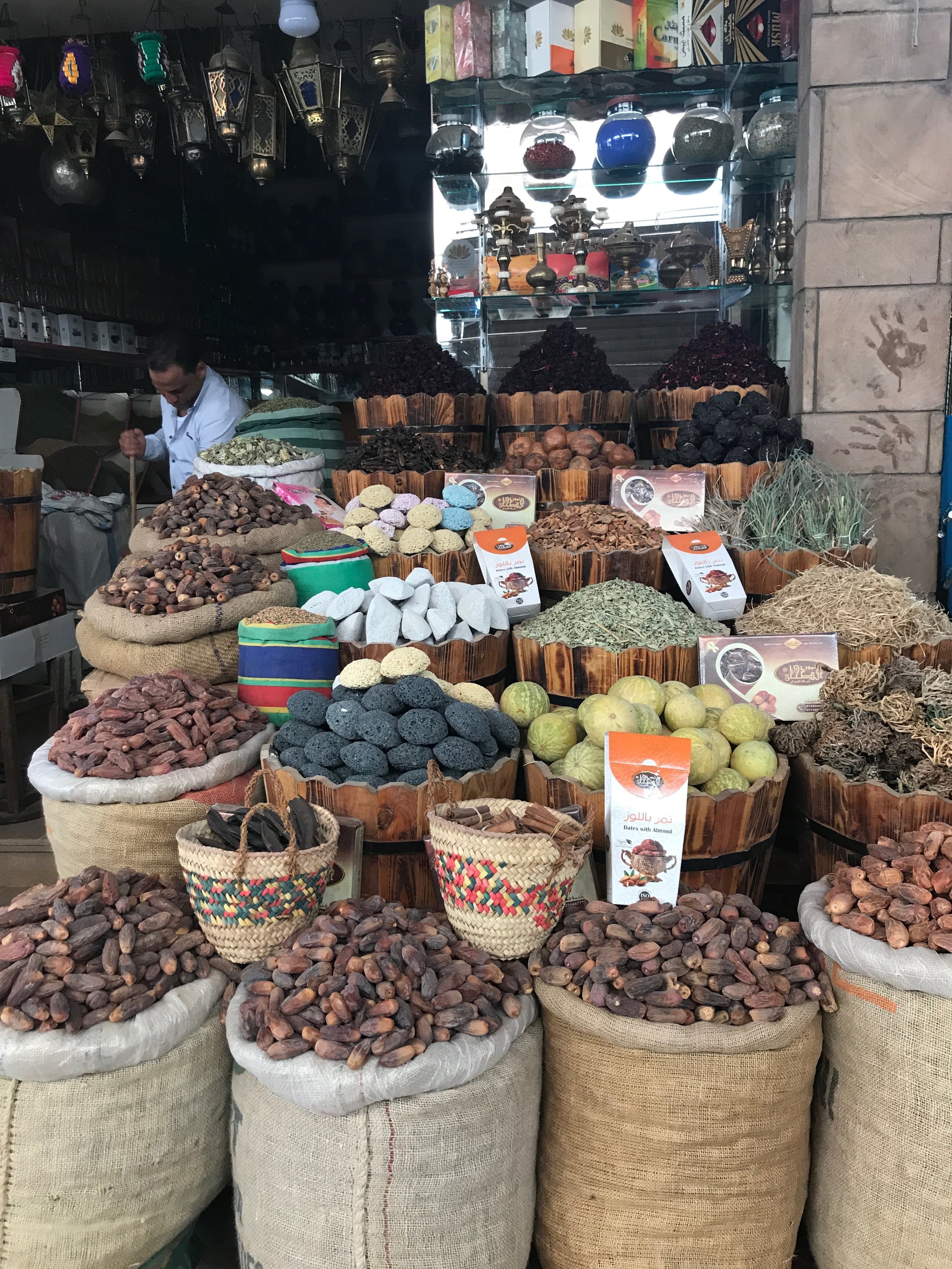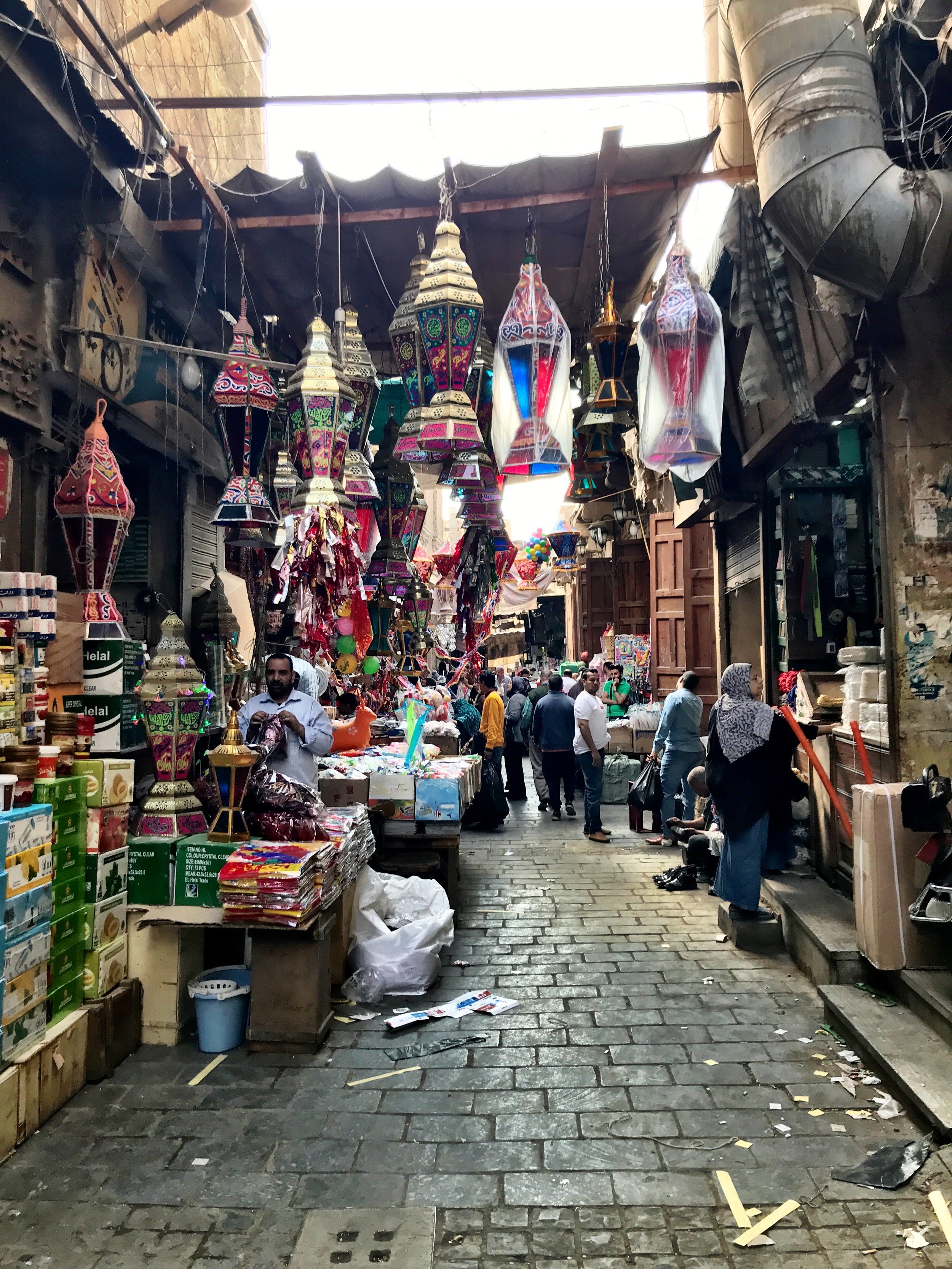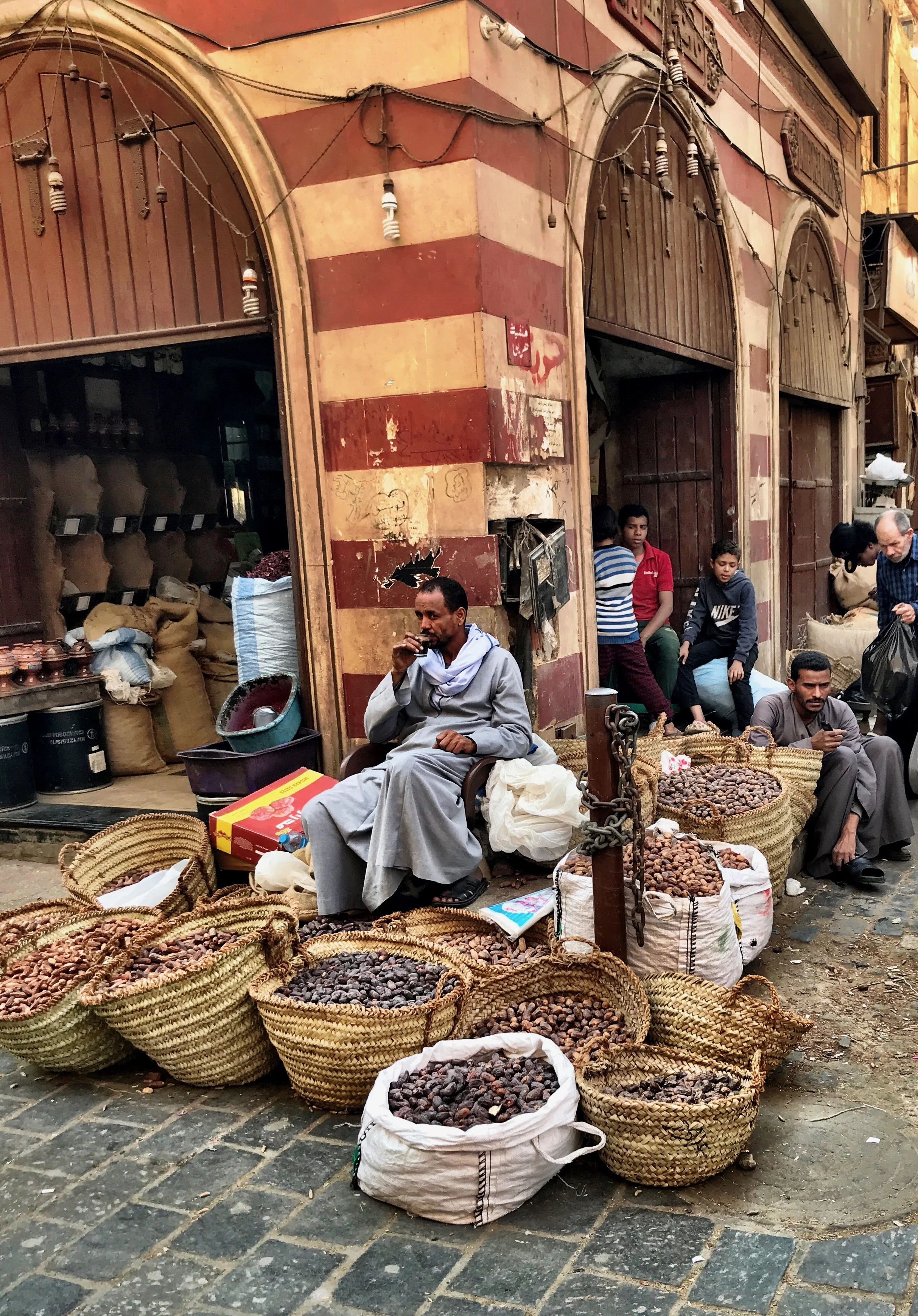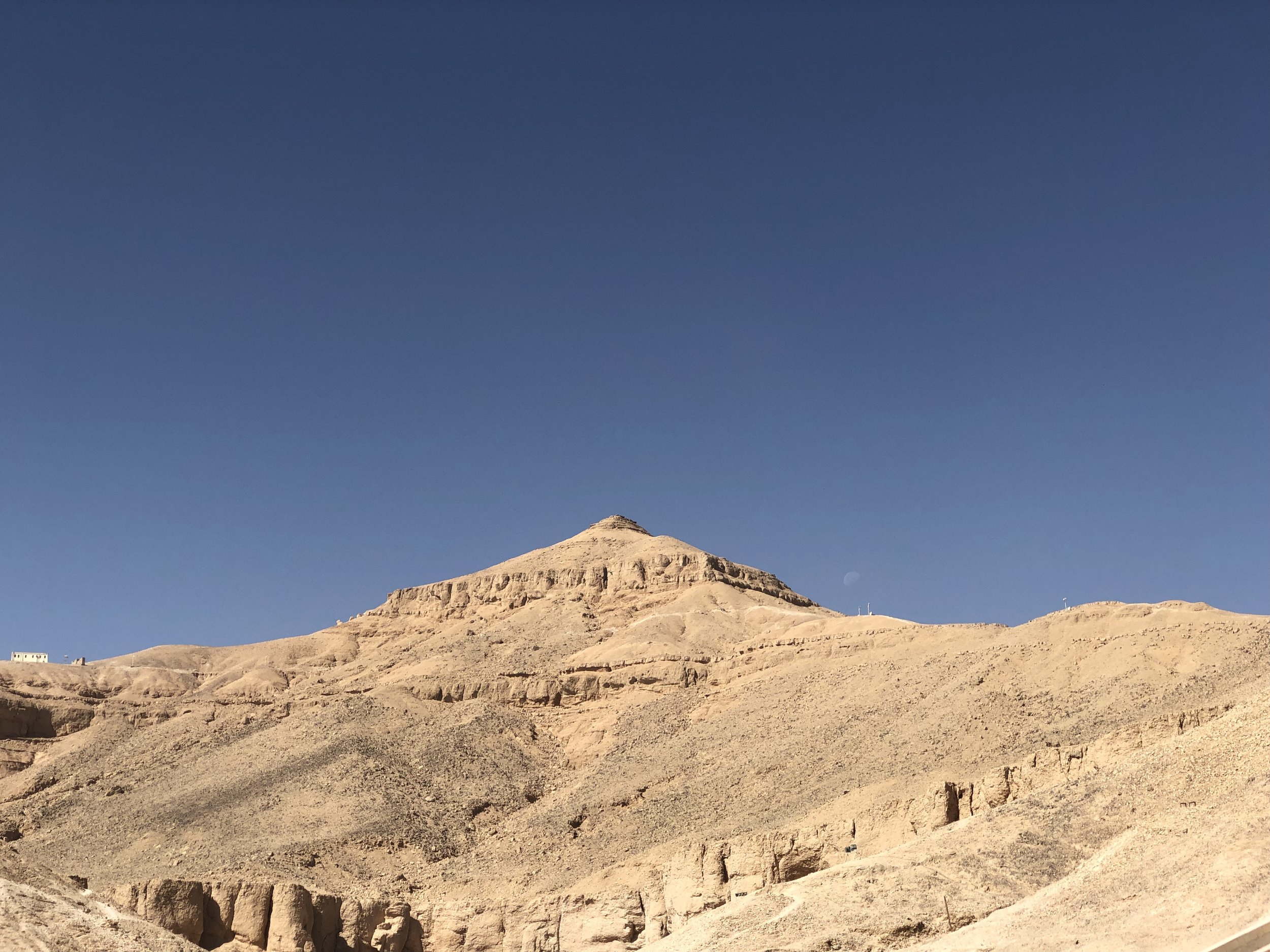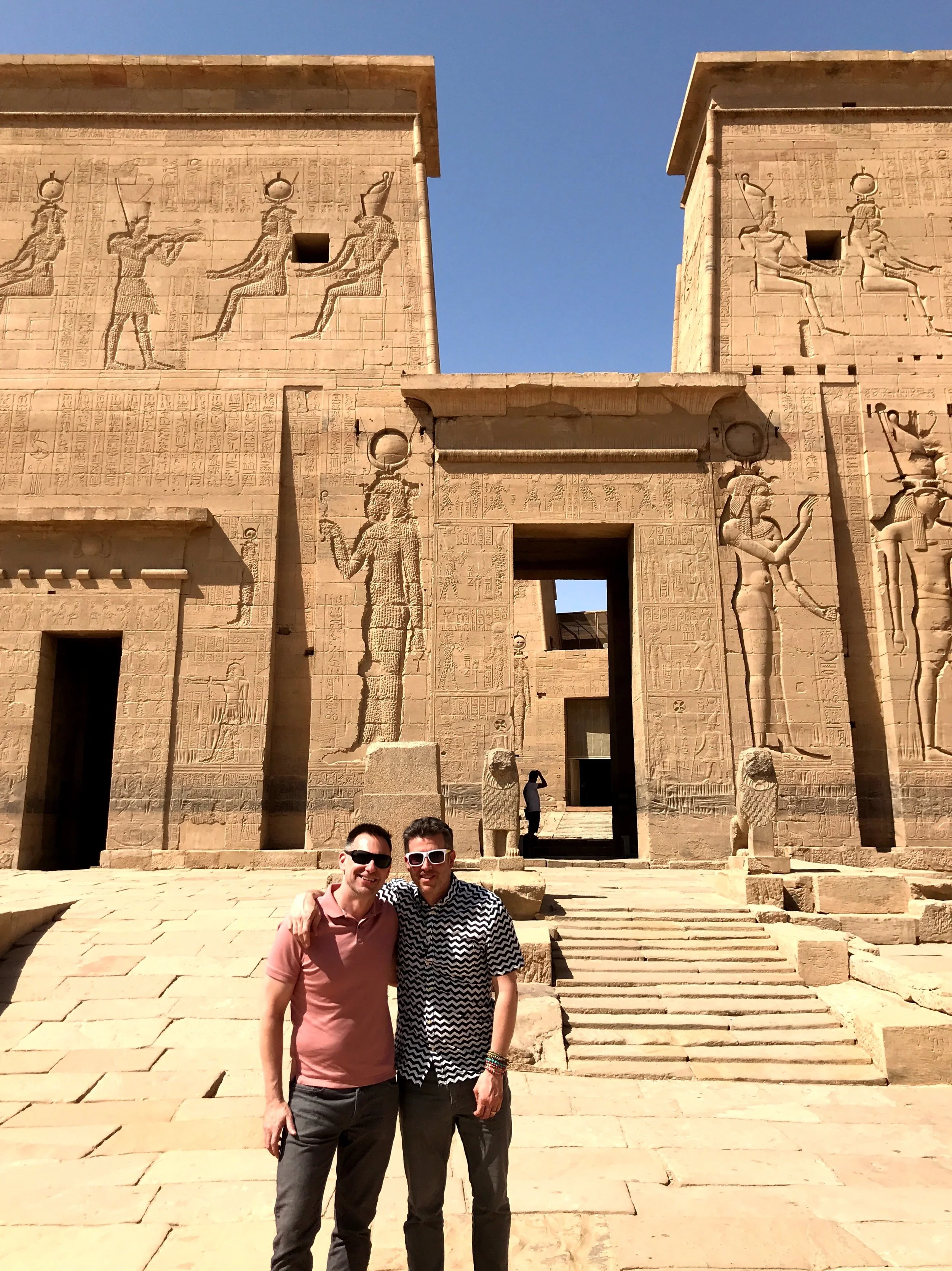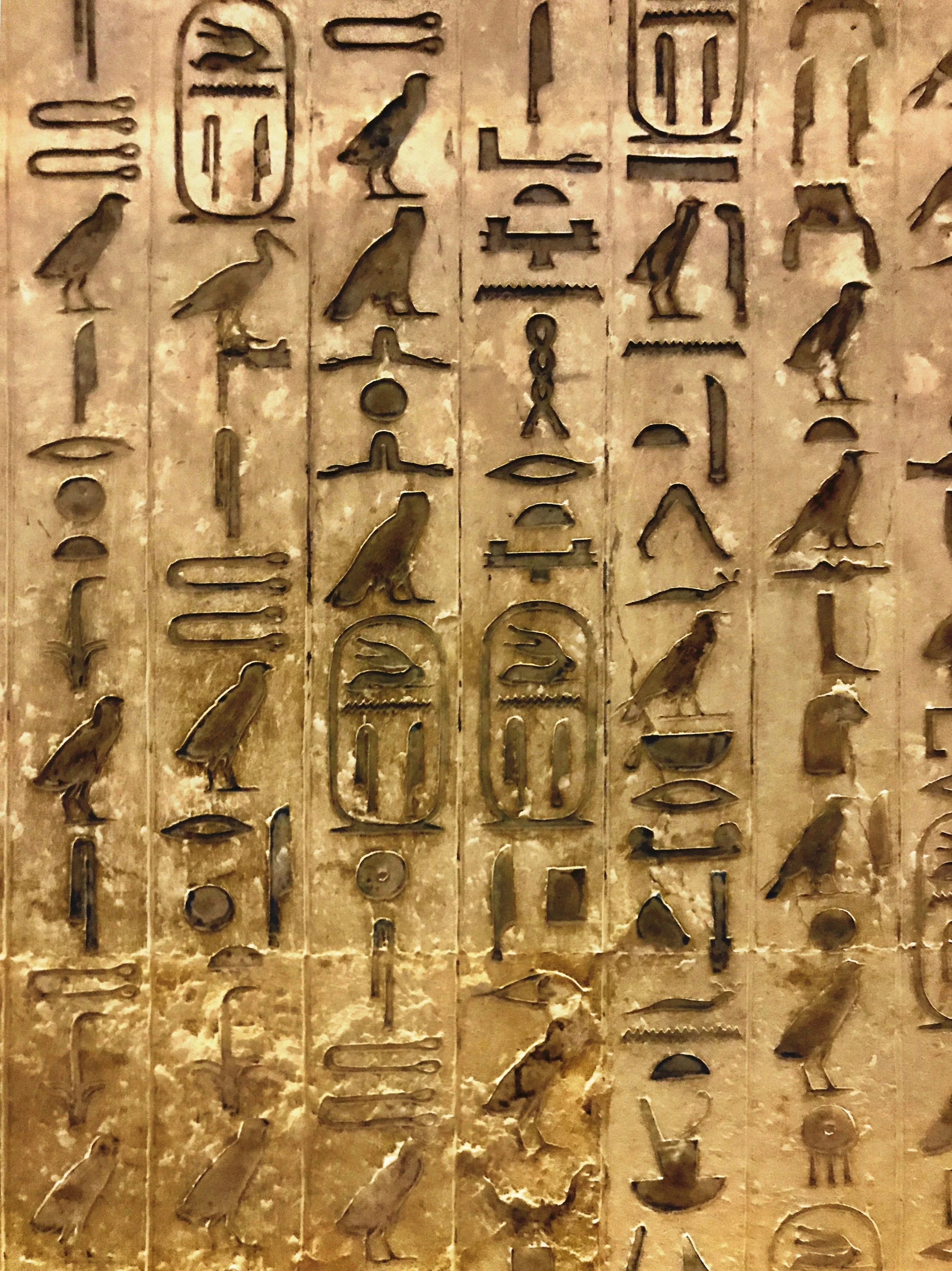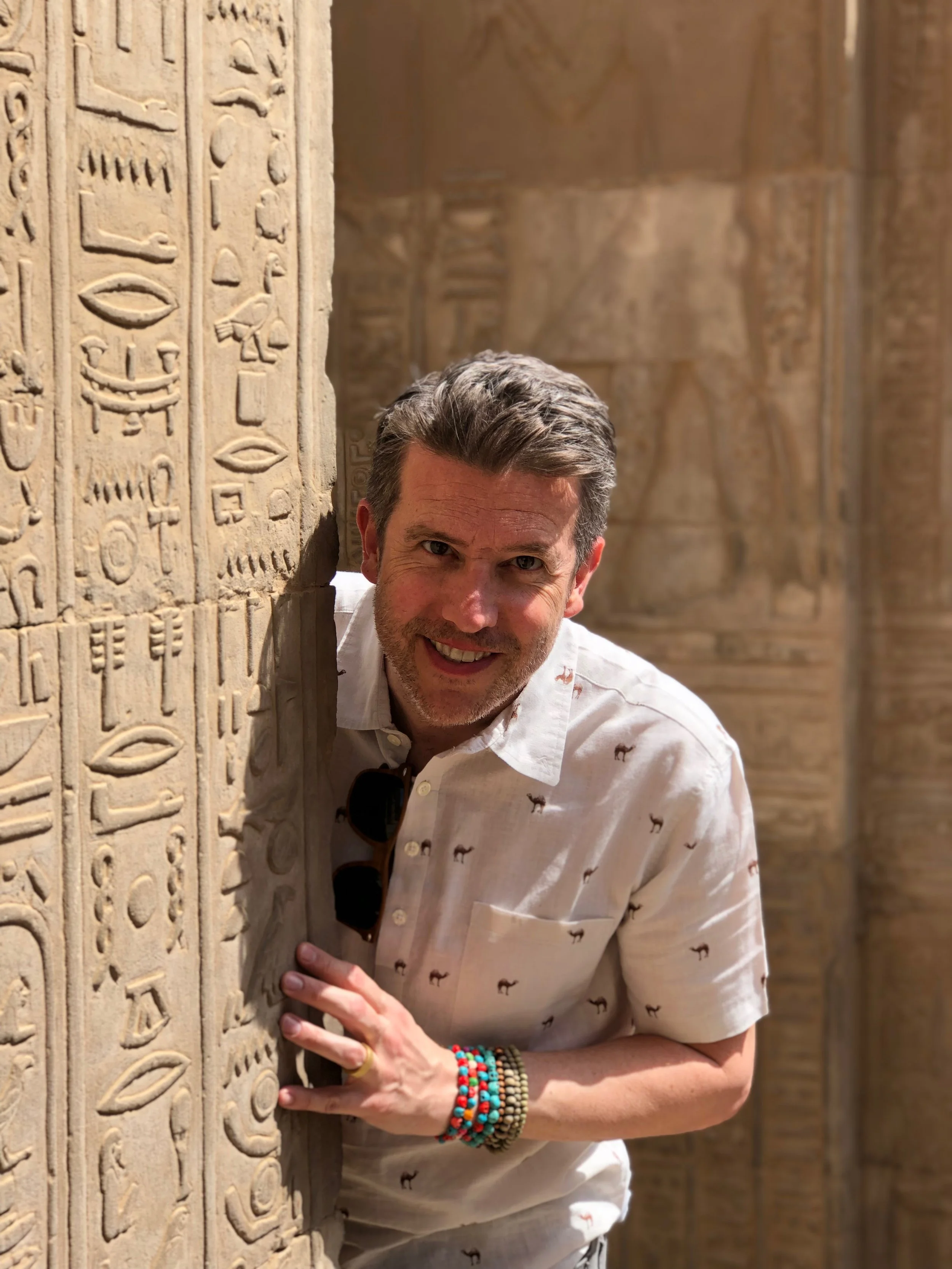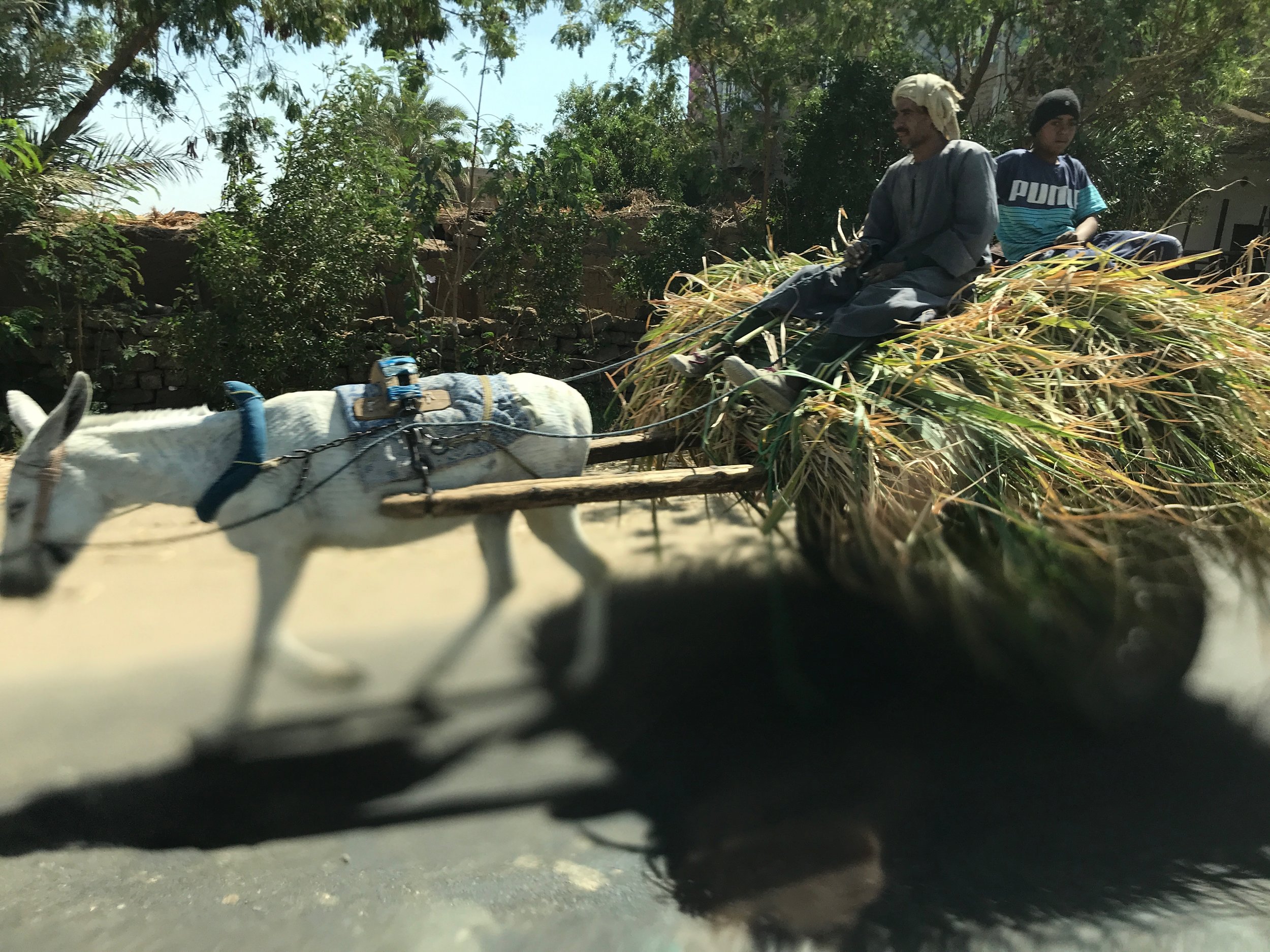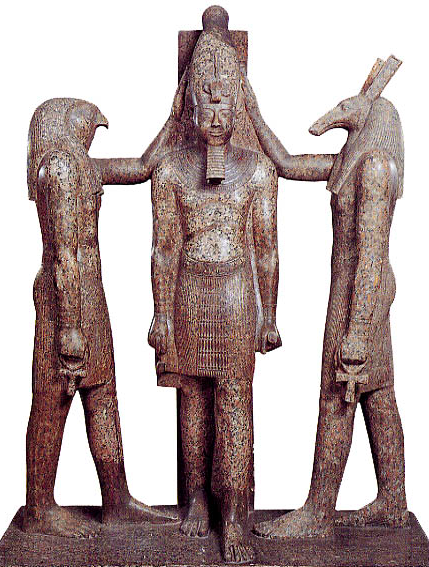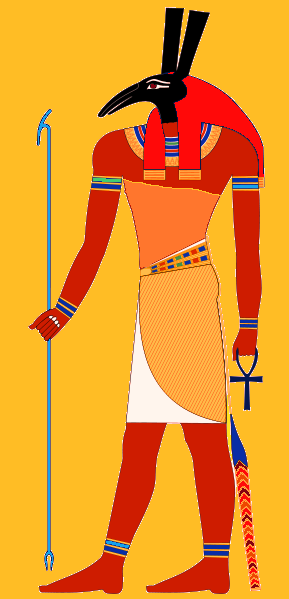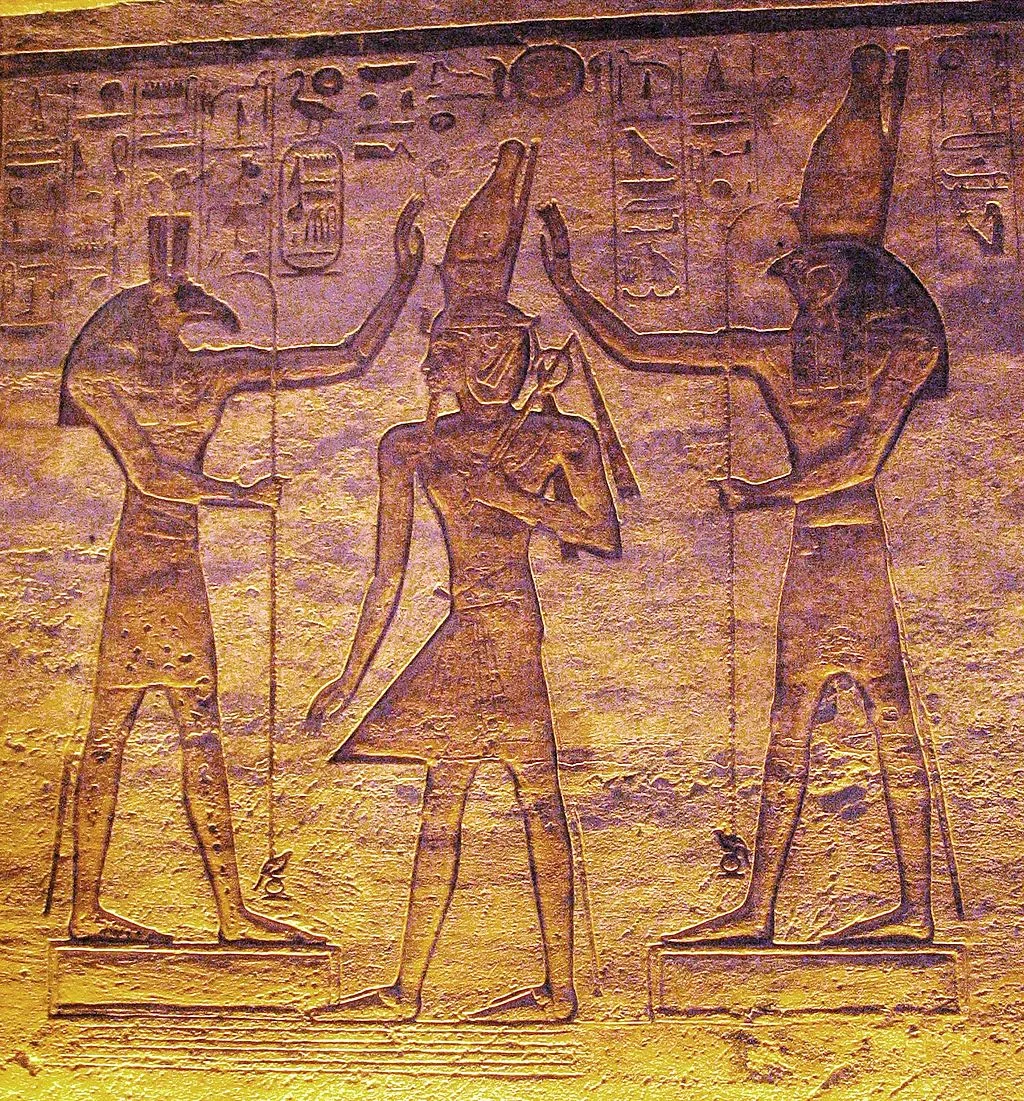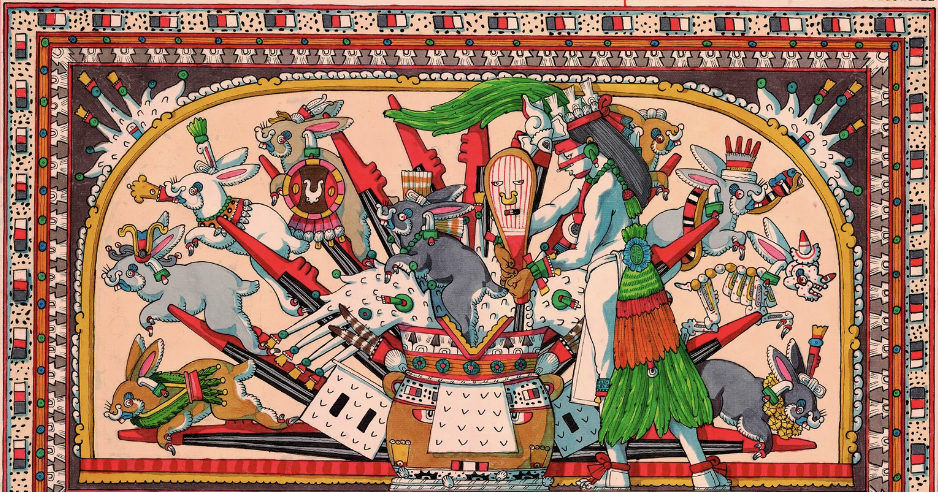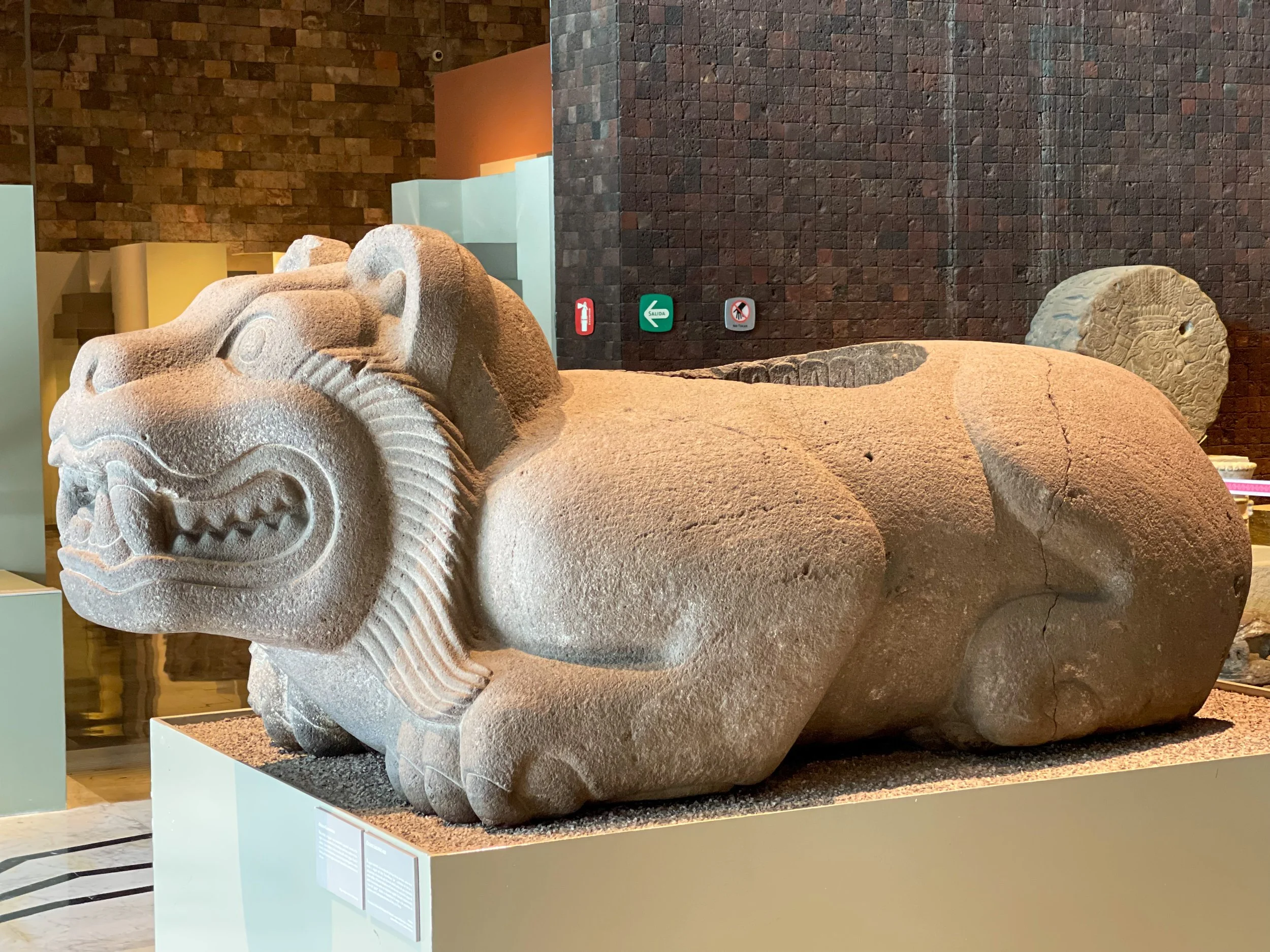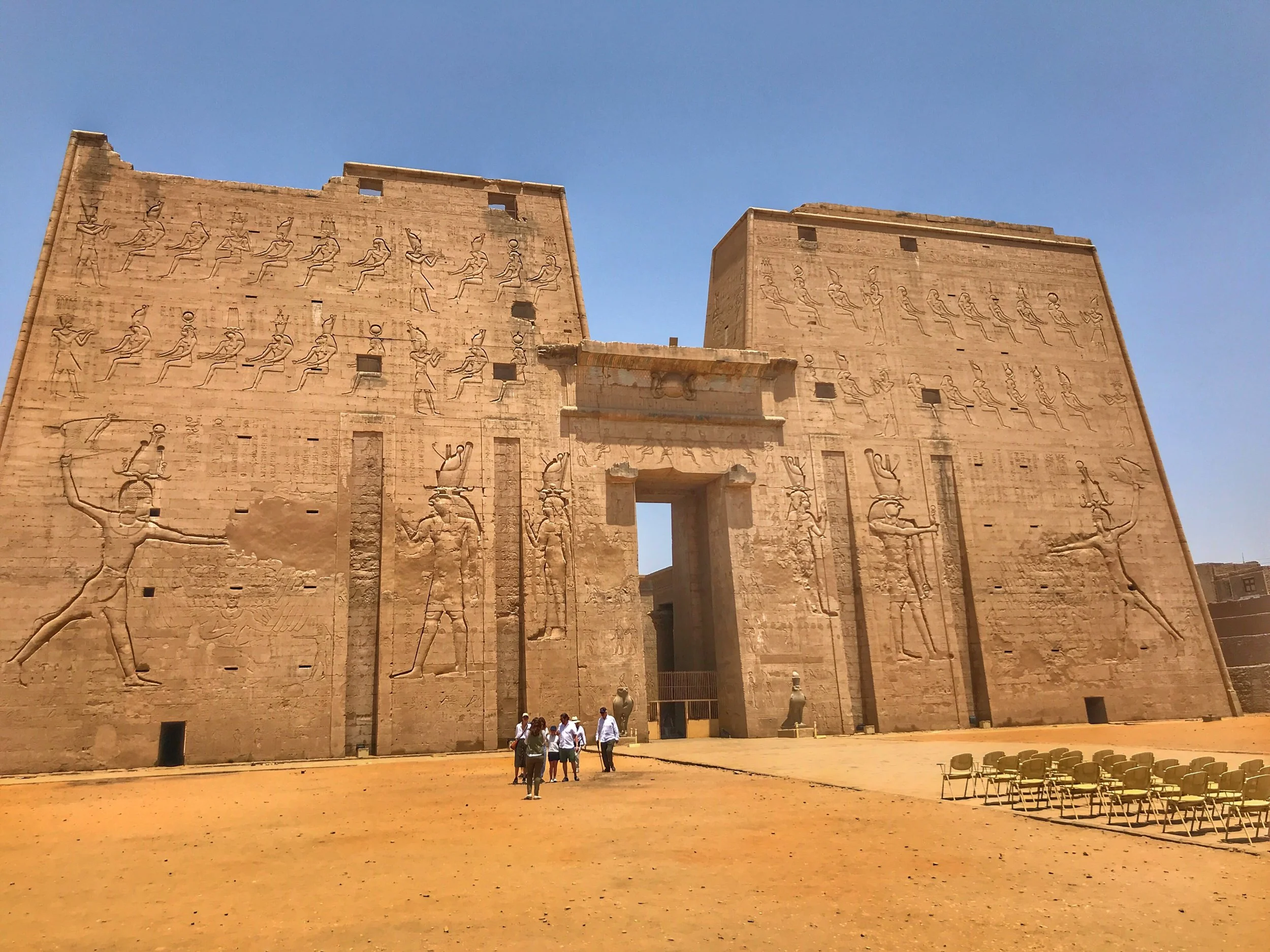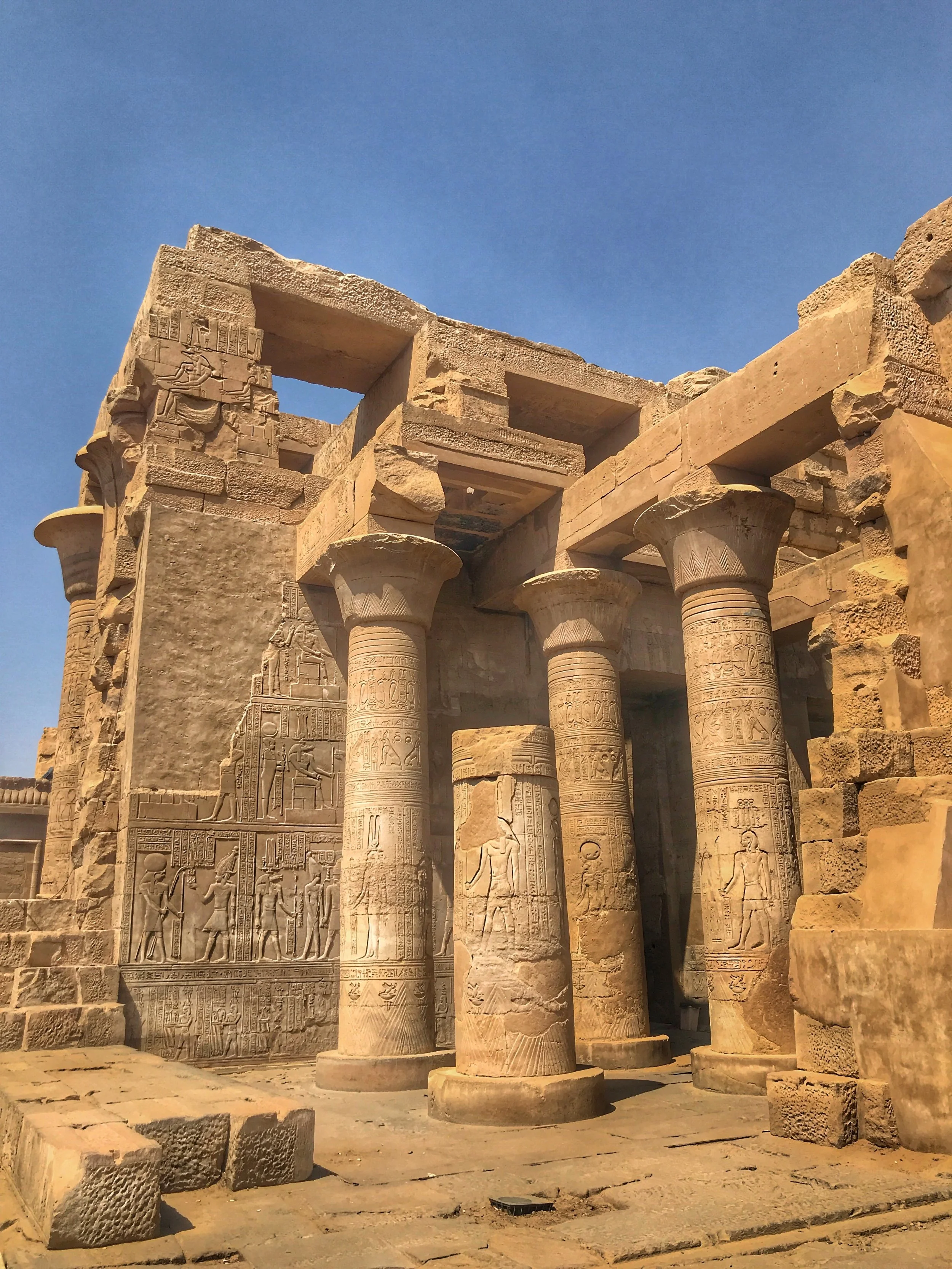Visit Deir el-Bahari to explore the funerary temple of the powerful and successful female pharaoh.
The clean minimalism of Hatshepset’s funerary temple feels strangely modern, even though it was built 3,500 years ago!
Cleopatra might be more famous, but Hatshepsut, born a royal princess during the New Kingdom period of Ancient Egypt, was the first historically documented woman to rule the powerful empire with the complete authority traditionally only given to men.
While staying in Luxor, we hired a driver and guide through Egypt Sunset Tours, and as part of our West Bank tour, we visited the Mortuary Temple of Hatshepsut.
“They should make a movie about Hatshepsut,” our guide Mamduh said to us as we drove to the temple complex. “Maybe many movies.” It was obvious he had great respect for her.
“To emphasize her authority, representations of Hatshepsut as a queen were replaced with gender-bending imagery depicting her in male pharaonic attire.”
Mamduh went on to elaborate that Hatshepsut’s reign was a period of peace and economic prosperity. He told us how her ambitious building projects set a precedent for future generations of pharaohs, but that her greatest architectural achievement was the tiered mortuary temple at Deir el-Bahari. It was built in the mid-1400s BCE.
Admission to the site costs 100 Egyptian pounds (about $6).
More Than a Woman
Hatshepsut (Hat-shep-soot) was the eldest daughter of King Thutmose, and the wife of Pharaoh Thutmose II, her half-brother. Thutmose Jr. reigned only briefly, and upon his death, Hatshepsut became the queen-regent of her stepson and successor, Thutmose III, who, at the time, was considered too young to rule alone. However, in her seventh year as co-regent, Hatshepsut officially assumed the role of King of Upper and Lower Egypt and ruled for more than two decades.
Once Hatshepsut took the throne, she reinvented herself and even took a new royal name, Maatkare, meaning Truth Is the Soul of the Sun. To emphasize her sovereignty, she opted for a complete gender transformation, depicting herself with a royal nemes headdress, short ritual shendyt-kilt and traditional false beard on her chin. Although standardized, her visage retained a few subtle feminine features, including a fullness of the face, widely spaced almond-shaped eyes and benign smile — though her breasts disappeared.
Fit for a Queen
Hewn from limestone, the linear geometric volumes of Hatshepsut’s mortuary temple have an understated elegance, appearing as if they’ve always been part of the rugged desert landscape. Staggered terraces jut out from the imposing rock cliffs and a central ramp ascends from the temple base to its uppermost apex.
Construction lasted over a decade, the site chosen for its location in the Theban Necropolis. This region was long considered sacred to the goddess Hathor, who, among her attributes protected the dead on their journey to the great beyond. The temple’s axis was positioned to align with Hatshepsut’s Temple of Amun, the eighth pylon at Karnak across the Nile on the East Bank. In addition, on the east side of the Valley of the Kings, directly behind the complex is KV20, the tomb Hatshepsut commissioned for herself and her father.
Mamduh walked with us up the processional path leading to the temple and explained that originally 100 or so sphinxes bearing images of Hatshepsut’s head lined both sides of the avenue. Wally and I had previously seen one at the Egyptian Museum in Cairo.
We paused in the forecourt, which once held exotic myrrh trees and other specimens brought from the ancient land of Punt. You can see the withered and desiccated stumps encircled by a low iron fence and sign.
Hatshepsut’s name meant Foremost of Noble Women, and as a young princess, she was appointed the religious title of God’s Wife of Amun, a high priestess who served as a mediator between the chief god and the pharaoh. She would later use this title as the underlying principle behind her sovereignty, claiming that she was acting as a divine instrument under the will of Amun and that the god himself was her father.
Only stubs of columns remain in the courtyard of the top terrace
Upper Court
Wally and I took the central ramp to uppermost terrace. Only a few of its columns still stand within the large open courtyard, and most of the Osiride statues of Hatshepsut (showing her depicted as the lord of the underworld) enclosed within its niches have been destroyed. The most sacred sanctuary, the holy of holies, is entered through a large granite gate in the center of the rear wall and was dedicated to the god Amun-Ra.
Wally stands in the granite portico leading to the sanctuary of the great god Amun
This terrace played an important role during the annual Beautiful Feast of the Valley festival, or Hab Nefer en Pa’Inet. A cult image of Amun-Ra was placed on a miniature ram-headed barque, or solar boat, and transported from the Temple at Karnak on the East Bank of the Nile to the temple of Medinet Habu, eventually coming to rest in the shrine here at Deir el-Bahri on the West Bank. Inside the sanctuary, the curved vaulted ceiling is decorated with celestial stars against a deep blue background. Niches, now empty, would have contained statues of Pharaoh Maatkare and most likely other members of the royal family.
We were amazed at the colors that have withstood the centuries, and particularly liked the star pattern on the ceiling
The majority of the excavation, reconstruction and restoration work has been carried out by the Polish-Egyptian Archaeological and Conservation Mission, located at the site behind a wooden door that, I believe, once led to the chapels of Hatshepsut and her late father.
What a woman! Hatshepsut styled herself with a lot of the symbolism only male pharaohs had used in the past — including a false beard
Middle Court
Among the impressive features of Hatshepsut’s temple are the colossal Osiride statues here. What makes these figures unique is that they are depicted grasping four symbols of royal authority and divine power, two in each hand: the ankh and flail in the right and the scepter and crook in the left.
Duke and Wally mimic the Osiride statues of Hatshepsut
A temple employee in front of some of the statues — note the reddish color on their faces
At either end of the middle court are two chapels. To the south of the colonnade is the Chapel of Hathor and to the north the Chapel of Anubis.
The chapel to the goddess of fertility sports Hathor columns, topped with her head
A procession of soldiers carrying shields and spears
In addition to her role as protector and travel companion to the dead, Hathor is the Egyptian goddess of sexual love, fertility, music, dancing and the sky. Inside, the now-roofless chapel includes a 12-columned hypostyle hall with four Hathor-headed capitals, resembling a super-sized sistrum, an Ancient Egyptian percussion instrument associated with the goddess, that rattles when shaken.
Colorful friezes in the Chapel of Anubis
The god of mummification is one of Wally’s faves. Jackals were often seen around cemeteries, leading Ancient Egyptians to believe that Anubis watched over the dead
After visiting the Hathor chapel, Wally and I wandered over to the Chapel of Anubis. What struck me most was the abundant amount of natural light illuminating its interior. Inside walls depict scenes of Anubis, the jackal-headed god of mummification, and Osiris. There were also a couple images of Hatshepsut, which sadly have been chiseled away.
Most temples in Ancient Egypt feature one or more colonnades like this one
Lower Court
The lower court contains two important sets of reliefs. To the south was the Birth Colonnade, which Wally and I must have somehow missed. I read that a relief and inscription within depicts the myth of Hatshepsut’s immaculate conception — the god Amun, in the guise of her father Thutmose I, impregnated her mother, Queen Ahmose, with his divine breath. Given Jesus’ similar birth centuries later, this method of storytelling shouldn’t seem so strange to us. At the time, it certainly wasn’t unusual for pharaohs to claim dvine birth.
The Punt Colonnade contains bas-relief scenes documenting the royally sponsored trade expedition to Punt, which was undertaken to export exotic goods, including cinnamon, ebony, ivory, gold, incense and myrrh, for the cult of Amun-Ra (and the pharaoh herself, of course).
A beautiful carving of a lion, one of the exotic animals from the expedition to the mysterious land of Punt — no one is quite sure where exactly it was
Thutmose III, although not technically the king during Hatshepsut’s reign, was not sitting idle; he had been honing his military skills by leading the armies of Egypt on successful campaigns of conquest. However, it’s been speculated that after his step-mother (and aunt’s) death, he attempted to erase her legacy, ordering many of her images to be systematically chiseled off temples and monuments.
Additional damage to the temple occurred during the Amarna period, when images of Amun were removed by the so-called heretic King Akhenaten. Then, the ancient Copts reused the temple’s upper terrace and built a mud-brick monastery there, which gives us the name of Deir el-Bahari, Arabic for Monastery of the North.
Looking into the sanctuary of the Chapel of Hathor
Visiting these temples was a lifelong dream for Duke, who has been obsessed with Ancient Egypt since he was a kid
Wally preferred other temples to Hatshepsut’s, but it’s still worth a visit
Thanks to our knowledgeable guide Mamduh, Wally and I came away with a solid understanding of the amazing Hatshepsut and her mortuary temple before exploring it.
If you’d like to take a moment to recharge after — the Luxor sun can be brutal — there’s a café pavilion on the premises offering a spectacular view of the complex, along with ice cream treats. –Duke
The innovative terraced and columned Mortuary Temple of Hatshepsut in what was once the city of Thebes
























